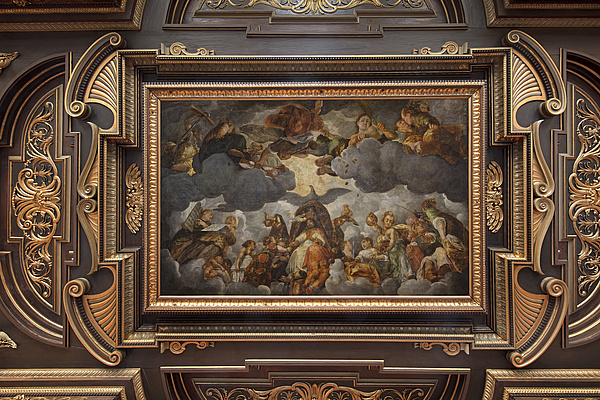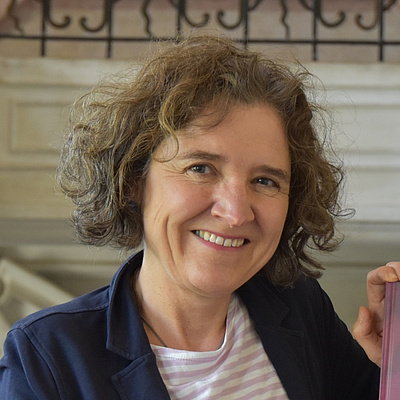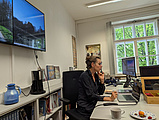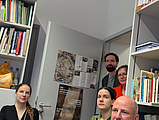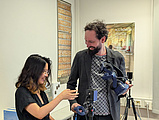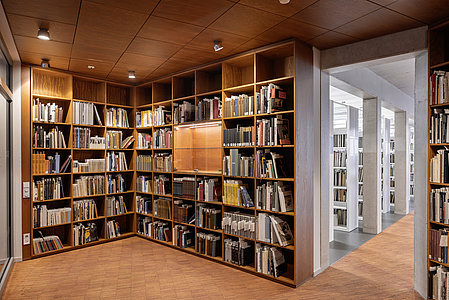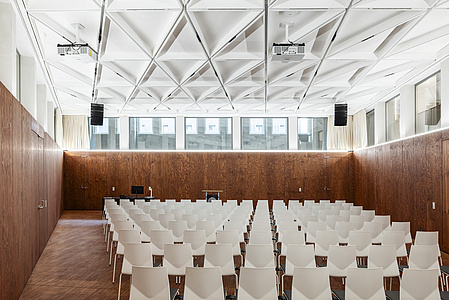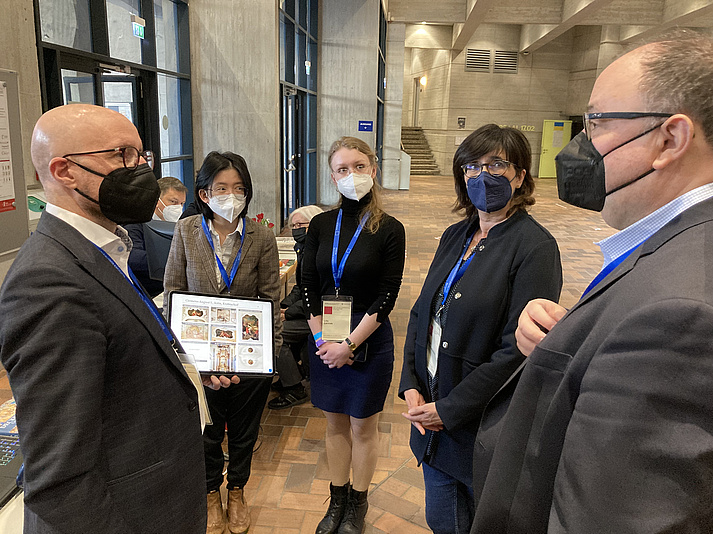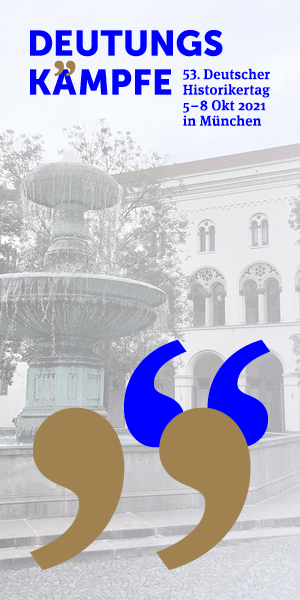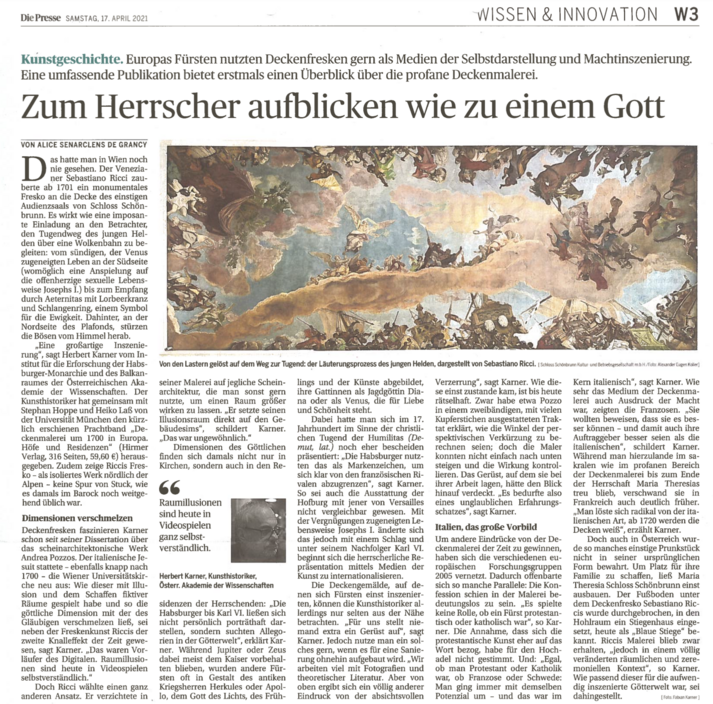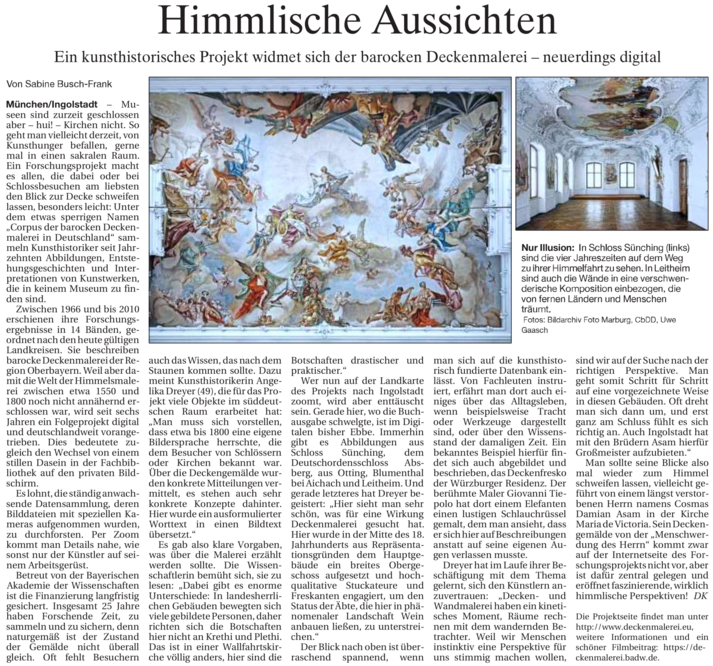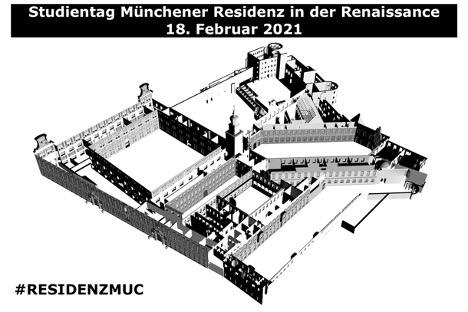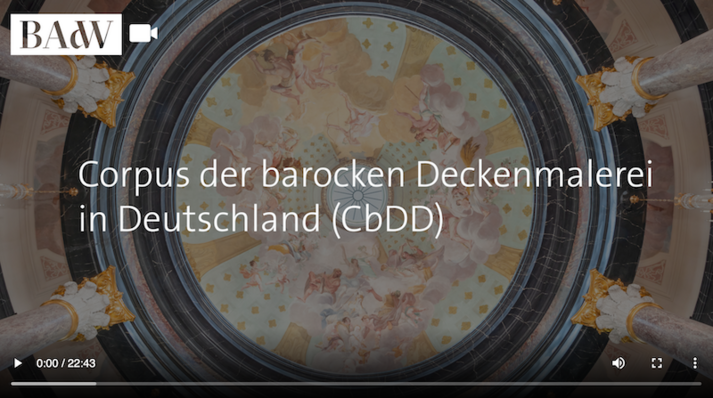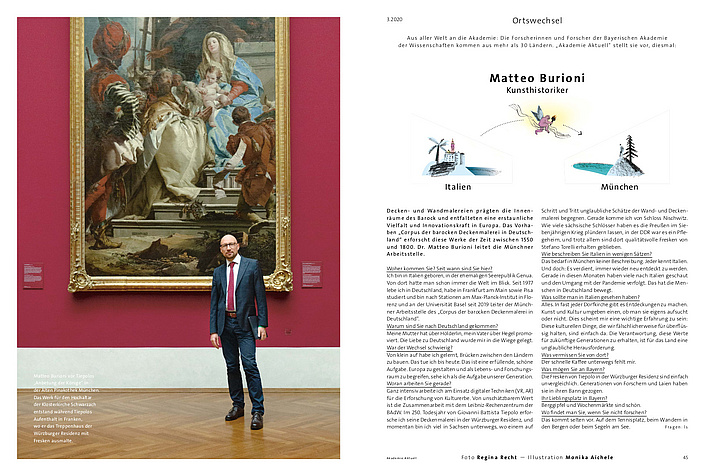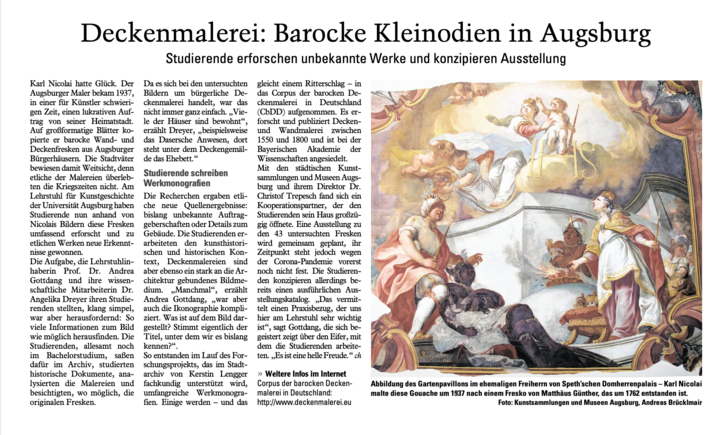Interdisziplinäre Scan-Kampagne zur Erforschung der Münchner Residenz
Das von Prof. Dr. Stephan Hoppe (LMU) geleitete Corpus der barocken Deckenmalerei hat im Dezember 2025 mit dem Lehrstuhl für Digital Cultural Heritage von Prof. Dr. Nicola Lercari (LMU) begonnen, das Sommerappartement Maximilians I. in der Residenz in München zu vermessen. Die Erdgeschoßzimmer an der Schwabinger Gasse (heute Residenzstraße) sind eine der drei Stellen, an denen der junge Herzog um 1600 die vollständige, bauliche Umgestaltung der Hofhaltung in Angriff nahm. Das Appartement wies eine Folge von dokumentierten, teils erhaltenen, teils verschollenen Deckenbildern von Peter Candid auf. Die Scan-Kampagne bildet einen Baustein im Rahmen einer langjährigen Forschungsanstrengung des Corpus zur Residenz. Der Bayerischen Schlösserverwaltung sei für die hervorragende und enge Zusammenarbeit gedankt.
Studie von Lilia Gaivan zur Salzburger Residenz erschienen
Die ehemalige wissenschaftliche Mitarbeiterin des Corpus, Lilia Gaivan, hat eine Studie mit dem Titel "Treppenbaukunst um 1600. Eine digital-architekturhistorische Analyse der Salzburger Residenz" veröffentlicht.
Die Arbeit konzentriert sich auf die Salzburger Residenz und deren frühbarocke Umgestaltung unter Fürsterzbischof Wolf Dietrich von Raitenau. Im Zentrum steht die 3D-Rekonstruktion der verlorenen Prunktreppe, die neue Erkenntnisse zu Bauphasen, architektonischen Konzepten und zum kulturellen Austausch zwischen Italien und den nordalpinen Fürstentümern ermöglicht.
Das Corpus der barocken Deckenmalerei auf dem XXXVIII. Deutschen Kongress für Kunstgeschichte 2026 in München

Das Corpus der barocken Deckenmalerei in Deutschland ist als Stand mit VR-Brille auf dem XXXVIII. Deutschen Kongress für Kunstgeschichte vom 25.-28. Februar 2026 in München vertreten.
Außerdem werden Matteo Burioni, Max Kristen und Stephan Hoppe am Donnerstag, den 26. Februar 2026, um 16:45 Uhr einen Vortrag mit dem Titel "Transparente Wissensräume: Dialogische KI in der Kunstgeschichte" halten.
Hier geht's zum Programm.
Stephan Hoppe und Matteo Burioni sind Mitantragsteller und Mitglieder der COST Action CA24164
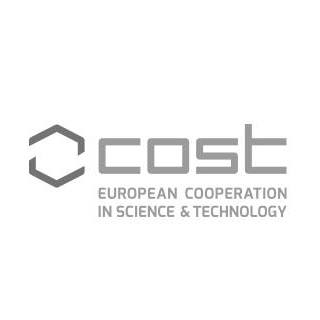
Stephan Hoppe und Matteo Burioni sind Mitantragsteller und Mitglieder der COST Action CA24164 - "Sensing Europe’s Court Spaces at the Crossroads of Past, Present and Future (SENSES)" 2025-2029.
Doktorandin Ke Ma erhält Herzog-Ernst-Stipendium der Forschungsbibliothek Gotha der Universität Erfurt
Doktorandin Ke Ma erhält Herzog-Ernst-Stipendium der Forschungsbibliothek Gotha der Universität Erfurt für Ihre Dissertation "Mapping Chinoiserie: Chinoise Sammlungsräume und ihre Innenausstattung in Schlossbauten des Alten Reichs (1650–1800). Sammlungsspezifische Faktoren – Verbreitungsmuster – Stilvariation“.
"International Conference: Image-Space Ensembles in the Baroque Age. Performative Functions, Curatorial Practices, Digital Reconstructions, 17-18 November 2025
Galleria Borghese is organizing, in collaboration with the Institut für Kunstgeschichte of the Friedrich-Alexander-Universität Erlangen-Nürnberg and the Accademia Nazionale di San Luca, a two-day conference dedicated to the concept of the space-image system in the Baroque period, entitled Image-space ensembles in the Baroque Age. Performative functions, curatorial practices, digital reconstructions, curated by Director Francesca Cappelletti and Professors Christina Strunck, Sabine Frommel and Cecilia Mazzetti di Pietralata.
Matteo Burioni wird mit einem Vortrag mit dem Titel "Cielo e orizzonte. La pittura di soffitto intorno al 1700" bei der Tagung sprechen.
Das vollständige Programm sowie weitere Informationen zur Tagung finden
Sie hier.
Tagung: Barocke Lebenswelten zwischen Stadt und Land, 11./12.09.2025
Vom 11. bis 12. September 2025 findet im Kloster Wettenhausen eine Tagung des Historischen Vereins Günzburg e.V. statt. Unter dem Titel „Barocke Lebenswelten zwischen Stadt und Land“ widmet sie sich den Stadt-Land-Beziehungen im 17. und 18. Jahrhundert. Dabei stehen sowohl wirtschaftliche und herrschaftliche Verbindungen als auch Fragen der Mobilität, der Verkehrswege und des Kulturtransfers im Mittelpunkt.
Im Rahmen dieser Tagung wird auch Angelika Dreyer am Freitag, den 12. September, um 11:15 Uhr, ihren Vortrag „Kunst und Kommerz im Dienst der Wissenschaften. Schwäbische Netzwerke der Aufklärung und ihre Visualisierung in der schwäbischen Freskomalerei“ halten.
Das vollständige Programm sowie weitere Informationen zur Tagung finden Sie hier.
Workshop: Historical Data Hacking. Digitale Werkzeuge zur Erschließung historischer Datensätze
Die Arbeitsstelle Marburg des Corpus der barocken Deckenmalerei in Deutschland (CbDD) und das NFDI4Memory Promovierendennetzwerk Digital History laden vom 26. bis 28.11.2025 zu einem Workshop nach Marburg ein, um gemeinsam einen disziplinübergreifenden Blick auf digitale Kompetenzen, Werkzeuge und Methoden zu werfen.
Der Workshop gibt einen Einblick in das Akademienprojekt CbDD und die dort erarbeiteten Forschungsdatenstrukturen sowie Analyse- und Auswertungsmethoden, an denen das Deutsche Dokumentationszentrum für Kunstgeschichte – Bildarchiv Foto Marburg neben der Ludwig-Maximilians-Universität in München seit 2015 als selbstständige Arbeitsstelle beteiligt ist. Zusammen mit dem 2024 gebildeten Promovierendennetzwerk Digital History (PnDH), das Doktoranden mit digital-historischen Themen aus den Geisteswissenschaften zusammenbringt, um zu erproben, wie digitale Methoden und wissenschaftliche Standards in heutigen und zukünftigen Dissertationen zusammenwirken können, sollen Ideen für sinnvolle Herangehensweisen an Forschungsdaten gesammelt werden.
Das Programm des Workshops möchte einen Workflow zur Strukturierung eines Datensatzes abbilden, der die Datenbereinigung, -transformation und -visualisierung sowie die wissenschaftliche Publikation umfasst.
Wir haben die Bewerbungsfrist für interessierte Promovierende und fortgeschrittene Masterstudierende mit einem digital-historischen Dissertations-/Forschungsvorhaben bis einschließlich 30.07.2025 verlängert.
Alle weiteren Informationen zur Veranstaltung finden Sie hier.
Tagung: Rathäuser in Europa– Decken- und Wandmalerei 1500-1800, 03.09.-05.09.2025
Eine Tagung des Corpus der barocken Deckenmalerei in Deutschland (CbDD) von Ludwig-Maximilians-Universität München und Bayerischer Akademie der Wissenschaften in Kooperation mit der Stadt Nürnberg
Rathäuser als Sitze der städtischen Obrigkeit sind wohlbekannt und wurden vielfach erforscht. Dennoch sind sie bislang nur selten aus einer vergleichenden gesamteuropäischen Perspektive betrachtet worden. Dabei ist längst anerkannt, dass sie zentrale Orte der städtischen Selbstdarstellung waren und dass sich die Stadtväter an den Bauten anderer Städte orientierten – so etwa der Augsburger oder Nürnberger Rat an Venedig. Die Tagung setzt hier an und schließt eine Lücke, indem sie sich einem bislang wenig beachteten Aspekt des Rathausbaus widmet: der Decken- und Wandmalerei. Diese spielte eine entscheidende Rolle in der repräsentativen Gestaltung frühneuzeitlicher Rathausräume.
Erstmals werden auf der Nürnberger Tagung Rathäuser aus ganz Europa vergleichend betrachtet. Dabei wird zwischen freien, weitgehend souveränen Städten wie Danzig oder Venedig und landsässigen Städten unterschieden, die einem Landesherrn unterstellt waren – was auf die Mehrzahl zutraf. Neben allgemeinen Allegorien wie Glaube und Gerechtigkeit wurde oft auch der Fleiß der Bürger als Basis des Gemeinwohls ins Bild gesetzt. Ebenso verbreitet waren Huldigungen an den Stadtherrn. Im Fokus steht die politische Botschaft der Deckenmalereien in Verbindung mit dem ikonographischen Programm des jeweiligen Raumes.
Forschende aus verschiedenen Ländern kommen vom 3. bis 5. September im historischen Nürnberger Rathaus im Schönen Saal zusammen, um ihre Erkenntnisse auszutauschen. Gäste sind herzlich willkommen! Aufgrund begrenzter Platzkapazitäten ist eine Anmeldung zwingend erforderlich.
Hier finden Sie die ausführliche Tagnungsankündigung und das Programm - auch in englischer Version.
Veranstaltungsort: Die Tagung findet im Schönen Saal des Rathauses Nürnberg statt. Seine Deckenmalerei stellt ein exemplarisches Beispiel städtischer Selbstdarstellung aus dem frühen 17. Jahrhundert dar.
Schöner Saal im Rathaus Wolffschen Bau
Zimmer 208, II. Stock
Rathausplatz 2, 90403 Nürnberg
Anmeldung und Hinweise: Die Tagungssprachen sind Deutsch und Englisch. Anmeldung bitte bis 01.08.2025 bei:
Corpus der barocken Deckenmalerei in Deutschland
Dr. Heiko Laß
Institut für Kunstgeschichte
Ludwig-Maximilians-Universität München
Zentnerstr. 31
D-80798 München
E-mail: heiko.lass@kunstgeschichte.uni-muenchen.de
Sie erhalten eine Bestätigung. Sollten vor Ort keine Plätze mehr zur Verfügung stehen, können Sie die Tagung online per Zoom verfolgen.
Das Corpus der barocken Deckenmalerei trauert um Ulrike Seeger (1964-2025)
Das Corpus der barocken Deckenmalerei trauert um Ulrike Seeger (1964-2025).
Bitte hier zum Nachruf weiter klicken.
Vorstellung des Projekts Corpus der barocken Deckenmalerei im Rahmen des Institutskolloquiums am 15. Juli 2025
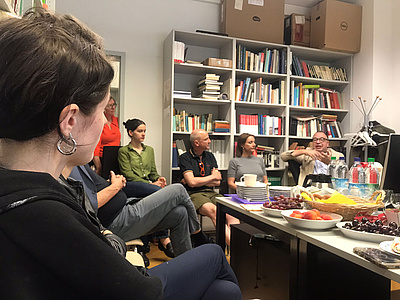
Im Rahmen des dritten informellen, institutsinternen Kolloquiums am 15. Juli 2025 wurde das Projekt Corpus der barocken Deckenmalerei vorgestellt. Mehrere Projektbeteiligte gaben Einblicke in aktuelle Entwicklungen und methodische Ansätze. Neben den inhaltlichen Beiträgen bot das Kolloquium auch Gelegenheit zum Ausprobieren der bereitgestellten VR-Brille.
Vielen Dank an alle Anwesenden für ihr Interesse und den anregenden Austausch.
Tagung: „Verführende Räume: Funktionen und Wirkmechanismen von multisensorischen Bild-Raum-Ensembles (16.–21. Jh.)“
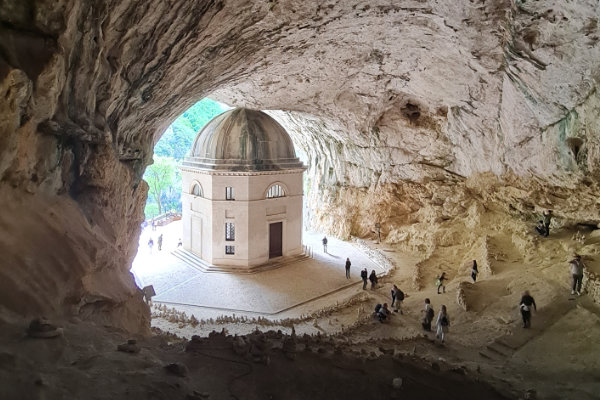
Am 02. und 03. Juni 2025 findet die Tagung „Verführende Räume: Funktionen und Wirkmechanismen von multisensorischen Bild-Raum-Ensembles (16.–21. Jh.)“ im Kreuz + Quer – Haus der Kirche Erlangen statt. Im Rahmen dieser Veranstaltung der Friedrich-Alexander-Universität Erlangen-Nürnberg wird auch Angelika Dreyer am 02. Juni einen Vortrag zum Thema „Das Ende der Verführung? Bild-Räume als Bildungsräume“ halten.
Um Anmeldung zur Teilnahme wird gebeten.
Weitere Informationen zur Tagung sowie das Programm finden Sie hier.
Umzug des Deutschen Dokumentationszentrums für Kunstgeschichte – Bildarchiv Foto Marburg
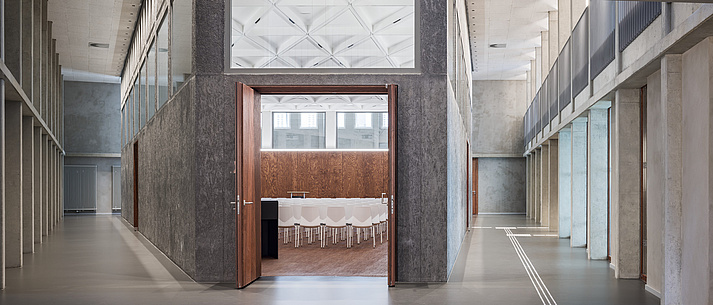
Nach über zehn Jahren intensiver Planung und Bauzeit ist das DDK in der Woche vom 28.4. bis 2.5.2025 in seinen neuen Forschungsbau umgezogen. Bereits im März fanden über 1.500 laufende Meter Archivalien und Fotopositive ihren neuen Platz, nun sind auch die Büros – insgesamt 45 Arbeitsplätze – vollständig bezogen. Mit dem Abschied vom Gründungsort in der Biegenstraße 11 schließt ein bedeutendes Kapitel der Geschichte des Bildarchivs. Zugleich freuen wir uns auf neue Impulse und Möglichkeiten am künftigen Wirkungsort.
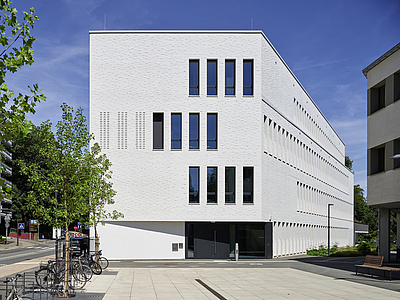
Die neue Adresse des DDK lautet:
Pilgrimstein 14
35037 Marburg
Die Arbeitsstelle des CbDD in Marburg finden Sie ab sofort im Raum +3/0370.
Vortrag von Ke Ma im Rahmen des RAK Frühjahrstreffens 2025
Im Rahmen des RAK Frühjahrstreffens, das vom 10. bis 11. Mai 2025 in Gotha stattfindet, wird Ke Ma am Samstag, den 10. Mai 2025, mit dem Vortrag "Verborgene Verbindungen und lokale Stilgenese: Spätbarocke Chinoiserie und Wissensnetzwerke in Schlossbauten des 18. Jahrhunderts – in Thüringen und darüber hinaus" ihr Dissertationsprojekt präsentieren.
Wikimedia Hackathon 2025
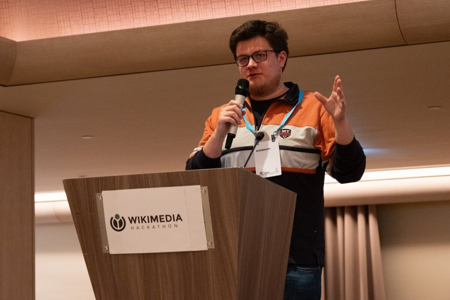
Maximilian Kristen nahm vom 2. bis 4. Mai am diesjährigen Wikimedia Hackathon in Istanbul teil und beteiligte sich am spannenden Austausch mit der internationalen Wikimedia-Gemeinschaft.
Das CbDD ist erneut im Jahresbericht des Sölring Foriining vertreten
Bereits zum zweiten Mal findet das Projekt Erwähnung im Jahresbericht des Vereins Sölring Foriining – Wir sind Sylt. Nach der ersten Vorstellung im Bericht für das Jahr 2023/24 wurde das Projekt nun auch im aktuellen Jahresbericht 2024/25 erneut aufgegriffen. Dr. Heiko Laß erforscht im Rahmen des Projekts die Sylter Bauwerke – ein zentraler Bestandteil dieser Arbeit sind die Fotokampagnen, die vom Bildarchiv Foto Marburg durchgeführt werden und einen wichtigen Beitrag zur Dokumentation und Forschung leisten.
Das Corpus der barocken Deckenmalerei trauert um Herrn Prof. Dr. Michael F. Zimmermann
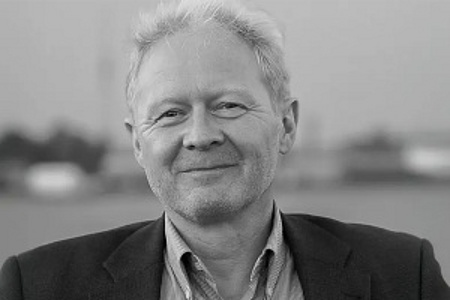
Das Corpus der barocken Deckenmalerei trauert um unser langjähriges Beiratsmitglied Herrn Prof. Dr. Michael F. Zimmermann.
"Bundesweites Forschungsprojekt erfasst Lüneburger Barockmalerei" - Das CbDD in Lüneburg
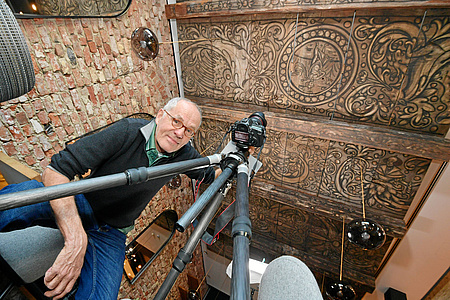
Zwischen Herrenmode und Café beherbergt das Gebäude am Markt 3 in Lüneburg ein wertvolles Zeugnis barocker Innenraumgestaltung: Eine Eichenholzdecke mit floralen und figürlichen Motiven. Nach Jahren der Lagerung in einer Scheune wurde die Decke 2012 aufwendig restauriert und in das Gebäude eingefügt, wo sie Andreas Lechtape fotografisch dokumentierte.
Hier gelangen Sie zum Zeitungsartikel.
Abschlusstagung des deutsch-französischen DFG/ANR-Projektes

Die Abschlusstagung des deutsch-französischen DFG/ANR-Projektes 'Eine Verflechtungsgeschichte der Deckenmalerei. Frankreich und Deutschland 1600-1800 / Une histoire croisée des plafonds peints : France-Allemagne, 1600-1800.' findet 12.-14. März 2025 in der Carl Friedrich von Siemens Stiftung (Südliches Schlossrondell 23, 80638 München) statt.
Für die Tagung ist eine Anmeldung erforderlich.
https://eveeno.com/dfg_anr_abschlusstagung2025
Den Flyer mit dem Veranstaltungsprogramm finden Sie hier.
Bildarchiv Foto Marburg bietet kostenfreie Nutzung von mehr als einer Million Kunstbildern
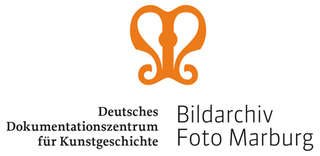
Das Deutsche Dokumentationszentrum für Kunstgeschichte – Bildarchiv Foto Marburg (DDK) stellt ab Januar seine umfangreiche Sammlung mit Millionen Fotografien zur europäischen Kunst und Architektur über seine Datenbank "Bildindex der Kunst und Architektur" kostenlos zur Verfügung. Gleichzeitig wirbt das DDK für eine faire und eigenverantwortliche Nutzung der Bilder, insbesondere durch korrekte Quellenangaben und respektvollen Umgang.
Ausführliche Berichte finden Sie zum einen hier und in der Frankfurter Allgemeinen Zeitung (FAZ) vom 4. Februar 2025 (Nr. 29, Seite 8) unter dem Titel „Gebühren für Nutzung abgeschafft“, verfasst von Wolfram Ahlers.
Tiepolos Weltmodell. Diversität und Respekt im Treppenhausfresko der Würzburger Residenz
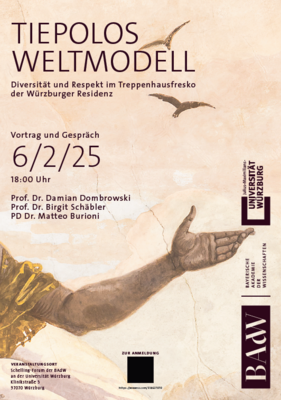
Im Schelling-Forum der Bayerischen Akademie der Wissenschaften findet am 6. Februar 2025 um 18.00 Uhr ein Abend zu "Tiepolos Weltmodell. Diversität und Respekt im Treppenhausfresko der Würzburger Residenz" statt. Die Kunstgeschichte ist überreich an allegorischen Darstellungen der Erde und ihrer Kontinente. Die meisten davon operieren mit konventionellen Stereotypen. Doch wie verhält es sich beim Treppenhausfresko in der Würzburger Residenz? Welchen Blick auf die Welt wählte der venezianische Künstler Giovanni Battista Tiepolo? Lässt sich sein weltberühmtes Fresko als ein frühes Plädoyer für ethnische und kulturelle Vielfalt verstehen? Nach den Impulsvorträgen von Damian Dombrowski (Universität Würzburg), Birgit Schäbler (Universität Erfurt) und Matteo Burioni (BAdW/LMU München) wird es Gelegenheit zu einer gemeinsamen Diskussion geben.
Die Teilnahme ist kostenlos. Um Anmeldung wird gebeten.
Hier finden Sie alle weiteren Informationen zur Veranstaltung.
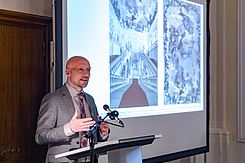
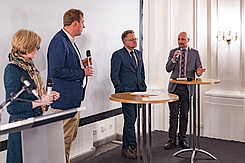
Workshop zu FAIRen Forschungspraktiken im Wikiversum am ZI
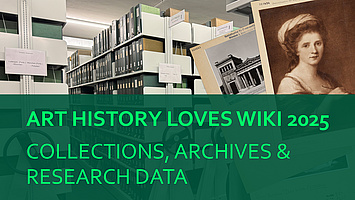
Im Rahmen der "Art History Loves Wiki 2025 – Collections, Archives & Research Data" Konferenz, die das Zentralinstitut für Kunstgeschichte gemeinsam mit kuwiki - Arbeitsgemeinschaft Kunstwissenschaften + Wikipedia vom 10.01. bis 12.01.2025 veranstaltet, wird es am Samstag, den 11.01., ab 16:15 einen Workshop zur Verwendung von Wikimedia Technologien zum nachhaltigen Erreichen und Einhalten der FAIR Prinzipien bei Forschungsprojekten geben. Hierbei wird das Corpus der barocken Deckenmalerei in Deutschland als prototypisches Beispiel für die Anwendung der WikiFAIR Methodologie auf die Objektforschung vorgestellt. Maximilian Kristen zeigt dabei die Entwicklungen der letzten Jahre zur Integration der Bauobjekte und Personen des CbDD in Wikidata und deren mögliche Abstraktion zur Nachahmung für andere Projekte.
Die Teilnahme ist kostenlos. Um Anmeldung wird gebeten.
Hier finden Sie alle weiteren Informationen zur Veranstaltung.
Lichtsimulation im Spiegelsaal von Schloss Rheinsberg von Elisabeth Mayer
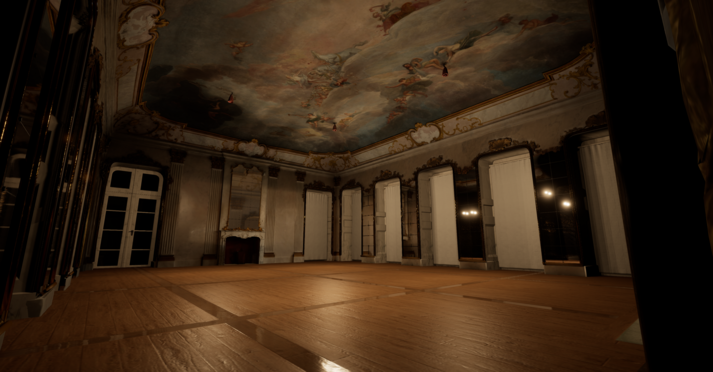
Elisabeth Mayer vom Leibnizrechenzentrum (LRZ) der BAdW hat eine Simulation von natürlichen und künstlichen Licht im Spiegelsaal des Schloßes in Rheinsberg auf der Supercomputing Konferenz in Atlanta 2024 vorgestellt. Die Simulation beruht auf einer digitalen Vermessung des Teams von Prof. Dr. Mona Hess (Universität Bamberg), die im Rahmen des DFG/ANR-Projekts plafond3d "Eine Verflechtungsgeschichte der Deckenmalerei in Deutschland und Frankreich 1600-1800" in Zusammenarbeit mit der Stiftung Preußischer Schlösser und Gärten erstellt wurde. Das DFG-Projekt findet im Rahmen des Corpus der barocken Deckenmalerei statt.
Mayer, E. (2024). Lighting the Way - Shedding light on the use of digital twins for historical rooms. The 2nd Digital Twins Workshop for High-Performance Computing. SC'24
Die Dissertation des ehemaligen Doktoranden Jan Lutteroth über die 3D-Rekonstruktion der Münchner Residenz ist erschienen
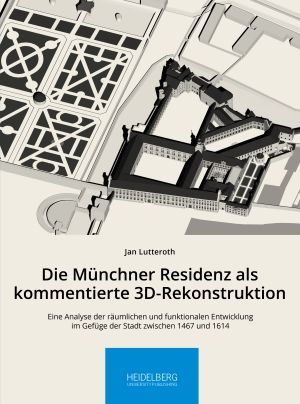
Die Dissertation des ehemaligen Doktoranden des Corpus' der barocken Deckenmalerei Jan Lutteroth "Die Münchner Residenz als kommentierte 3D-Rekonstruktion. Eine Analyse der räumlichen und funktionalen Entwicklung im Gefüge der Stadt zwischen 1467 und 1614" ist bei Heidelberg University Press erschienen.
Lutteroth, Jan: Die Münchner Residenz als kommentierte 3D-Rekonstruktion: Eine Analyse der räumlichen und funktionalen Entwicklung im Gefüge der Stadt zwischen 1467 und 1614, Heidelberg: Heidelberg University Publishing, 2024 (Höfische Kultur interdisziplinär (HKI): Schriften und Materialien des Rudolstädter Arbeitskreises zur Residenzkultur, Band 9).
Hier finden Sie die Publikation.
Vortrag von Prof. Dr. Maarten Delbeke (ETH Zürich) über das Bayerische Rokoko in der Karmeliterkirche München
Am Freitag, den 6. Dezember 2024, um 15:00 Uhr laden die Hauptabteilung Kunst des Erzbischöflichen Ordinariats und der Corpus der Barocken Deckenmalerei der Bayerischen Akademie der Wissenschaften herzlich zu einem Vortrag in die ehemalige Karmeliterkirche in München ein.
Prof. Dr. Maarten Delbeke (ETH Zürich) wird in seinem Vortrag mit dem Titel Gedanken über Geschmack und Hingabe. Die Bewegung von Relikten und Rocaillen in St. Rasso Grafrath die Ausstattung der Wallfahrtskirche St. Rasso in Grafrath (1750–1759) als Abschluss einer langen Tradition der Reliquienverehrung beleuchten. Anhand zeitgenössischer Predigten wird die Architektur des Hauptaltars im Zusammenhang mit früheren Phasen von Bewegung und Verehrung betrachtet – insbesondere der Überführung von St. Rasso und weiteren Heiligtümern Bayerns nach München im Jahr 1704.

Prof. Dr. Maarten Delbeke ist Experte für die Kunst und Architektur der Frühen Neuzeit in Europa. Er lehrt an der ETH Zürich und leitet das Forschungsprojekt "Swiss Rococo Cultures". Zu seinen Publikationen zählen Werke wie The Art of Religion und Johann Bernhard Fischer von Erlach: Project of a Historical Architecture (2023).
Die Teilnahme ist kostenfrei. Zur besseren Planung bitten wir hier um Ihre Anmeldung bis 29. November.
Veranstaltungsort: Ehemalige Karmeliterkirche. Karmeliterstr. 1, 80333 München
"Exploring AI in Science. Past, Present and Everday." - Workshop zur Anwendung von KI in der Forschung
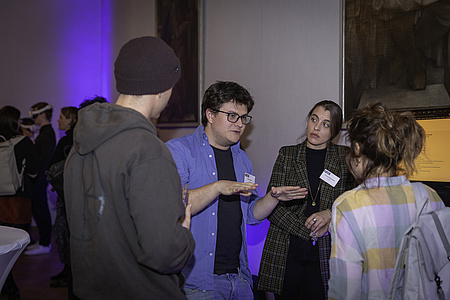
Am 05. November 2024 um 18:30 Uhr findet in der Bayerischen Akademie der Wissenschaften der Workshop "Exploring AI in Science: Past, Present, and Everyday" ein. Die Teilnehmenden erhalten spannende Einblicke in die Welt der Künstlichen Intelligenz und ihre vielfältigen Anwendungen – von maschinellem Sehen bis hin zur Sprachverarbeitung. Ziel ist es, die oft komplexe Technologie greifbar zu machen und den verantwortungsvollen, effektiven Einsatz von KI aufzuzeigen. Das CbDD wird ebenfalls mit einem Stand vor Ort vertreten sein.
Hier finden Sie alle Informationen zu der Veranstaltung. Um Anmeldung wird gebeten.
"Wertvolles Erbe für die Nachwelt bewahren" - Das CbDD in Oldenburg

Das Degodehaus am Markt 24 in Oldenburg, das letzte erhaltene Fachwerkhaus der Stadt, birgt eine kunsthistorische Besonderheit: barocke Deckenmalereien. Im Rahmen des Forschungsprojekts Corpus der barocken Deckenmalerei in Deutschland wurden diese am 2. Oktober 2024 digital erfasst, um sie für zukünftige Generationen zu bewahren.
Hier gelangen Sie zum ausführlichen Bericht.
Das CbDD zu Besuch beim Herrenhauszentrum des Ostseeraumes

Nach drei Jahren intensiver Forschungsarbeit lädt das Herrenhauszentrum des Ostseeraums zur feierlichen Abschlusstagung seines Projekts ein. Unter dem Titel „Knotenpunkte des Wissens – Herrenhäuser im 18. Jahrhundert“ werden vom 23. bis 26. Oktober 2024 die faszinierenden Erkenntnisse rund um die Rolle und Bedeutung von Herrenhäusern als Wissenszentren im 18. Jahrhundert vorgestellt und diskutiert.
Auch das Corpus der barocken Deckenmalerei nimmt als Gast an dieser Veranstaltung teil.
Hier finden Sie nähere Informationen zur Tagung.
Kickoff-Retreat des NFDI4Memory "Promovierendennetzwerks Digital History"

Die Doktorandin Lilia Gaivan hat vom 30.09.2024 bis 02.10.2024 am Kickoff-Retreat des NFDI4Memory „Promovierendennetzwerks Digital History“ unter dem Motto „Promotionskultur x Datenkultur: Wie promovieren wir digital-historisch?“ mit ihrem Dissertationsprojekt „Das Künstlernetzwerk am Salzburger Hof um 1600 (AT)“ teilgenommen.
Hier finden Sie alle Informationen zur Veranstaltung.
Deutsch-französische Forschungsgruppe zu Gast im Landesamt für Denkmalpflege Sachsen
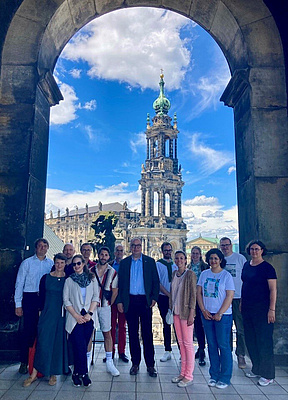
Am 16. Juni 2024 besuchte eine deutsch-französische Forschungsgruppe die wissenschaftlichen Sammlungen des Landesamts für Denkmalpflege Sachsen. Die Delegation unternahm im Rahmen einer mehrtägigen Fachexkursion eine Reise zu barocken Deckenmalereien in Sachsen. Auf dem Programm standen unter anderem Besuche des Gohliser Schlösschens in Leipzig, der Hoflößnitz in Radebeul sowie zahlreicher Bauwerke in Dresden, wie das Palais im Großen Garten und die Paradesäle im Residenzschloss.
Den Abschluss der Exkursion bildete der Besuch der Bild- und Plansammlung des LfD, wo insbesondere originale Architekturzeichnungen des 18. Jahrhunderts und historische Fotografien von Deckengemälden großes Interesse weckten.
Hier finden Sie den Bericht.
Tagung: "Aufstieg und Abstieg. Renaissancetreppen in Europa", 11.-12.10.2024
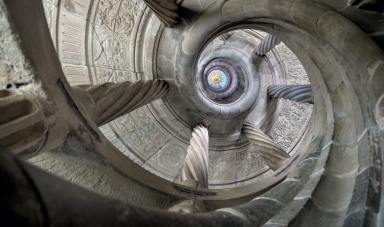
Am 11. und 12. Oktober 2024 findet die Tagung „Aufstieg und Abstieg. Renaissancetreppen in Europa“ im Residenzschloss Mergentheim statt. Im Rahmen dieser Veranstaltung der Staatlichen Schlösser und Gärten Baden-Württemberg und des Rudolstädter Arbeitskreis zur Residenzkultur wird auch Stephan Hoppe am 11. Oktober einen Vortrag zum Thema „Aufstieg und Abstieg: Treppen der Renaissance in Europa – ein Forschungsüberblick“ halten.
Zudem haben Interessierte die Möglichkeit am Sonntag, den 13. Oktober, an einer Exkursion nach Rothenburg ob der Tauber und Creglingen teilzunehmen.
Die Plätze für die Exkursion sind begrenzt. Eine Anmeldung für die Tagung und die Exkursion ist daher bis spätestens Freitag, den 27. September, erforderlich.
Hier finden Sie alle Informationen zur Tagung.
Interview zu den Fotokampagnen des Deutschen Dokumentationszentrums für Kunstgeschichte - Bildarchiv Foto Marburg
In der aktuellen Ausgabe der Zeitschrift Fotogeschichte (173/2024) ist ein Interview zu den Fotokampagnen des Deutschen Dokumentationszentrums für Kunstgeschichte - Bildarchiv Foto Marburg erschienen. Hierbei hat auch Almut Berchtold, die die Kampagnen des Corpus’ der barocken Deckenmalerei verantwortet, mitgewirkt.
Almut Berchtold, Susanne Dörler, Franziska Lampe, Thomas Scheidt (2024): Fotokampagnen für die Forschnug. Praxis und Politik des dokumentarischen Fotografierens. Ein Gespräch über die Kampagnenarbeit des Bildarchiv Foto Marburg, in: Holzer, Anton (Hrsg.): Fotogeschichte. Beiträge zur Geschichte und Ästhetik der Fotografie 173/2024, Jg. 44, Ilmtal-Weinstraße 2024, S.49-56.
Hier finden Sie weitere Informationen zum Heft.
"Forschungsdaten im Corpus der barocken Deckenmalerei" - Beitrag von Ke Ma beim Online-Forum Datenkompetenz der Cultural Research Data Academy (NFDI4Culture)
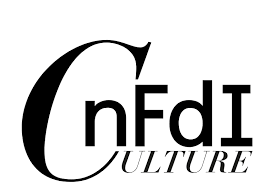
Im Rahmen des Online Forums "Gemeinsam Datenkompetenz entwickeln – Aus- und Weiterbildungsbedarf in den 4Culture Communities" des NFDI4Culture wird Ke Ma über die Verwendung der Forschungsdaten im Corpus der barocken Deckenmalerei sprechen.
Die Veranstaltung wird am 25. September 2024 zwischen 09.00 Uhr und 13.00 Uhr via Zoom stattfinden. Eine Anmeldung ist erforderlich.
Hier geht es zum Programm und zur Anmeldung.
Themenkonferenz: "KI-Methoden im Akademienprogramm – Potenziale und Anwendungsszenarien", 23.-25.09.2024
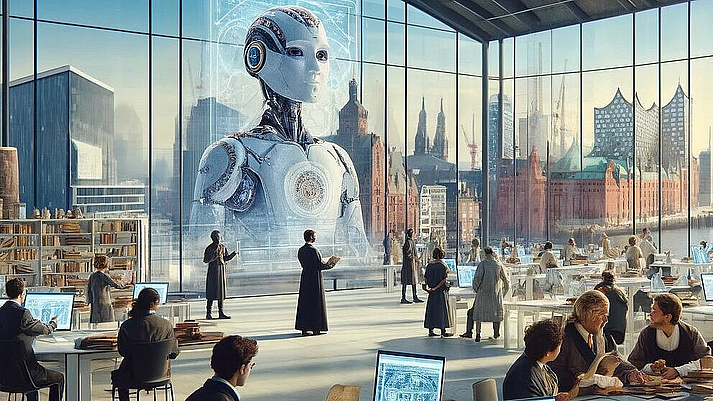
Vom 23. bis 25. September 2024 findet in Hamburg die Themenkonferenz "KI-Methoden im Akademienprogramm: Potenziale und Anwendungsszenarien" statt, ausgerichtet von der Akademie der Wissenschaften in Hamburg und der Niedersächsischen Akademie der Wissenschaften zu Göttingen. Im Zentrum der Veranstaltung steht die Erörterung und Erprobung der Potenziale von KI-Methoden für die Analyse und Aufbereitung digitaler Ressourcen, insbesondere im Rahmen des Akademienprogramms.
Die Konferenz bietet den Teilnehmenden die Möglichkeit, neue methodische Ansätze gemeinsam zu diskutieren. Besonders im Fokus steht der Einsatz von Künstlicher Intelligenz zur Erschließung und Präsentation von Forschungsergebnissen.
Im Rahmen der Konferenz werden Theresa Baumann, Dr. Matteo Burioni und Max Kristen ihren Beitrag mit dem Titel "Vorüberlegungen zu KI-Anwendungen im Corpus der barocken Deckenmalerei" vorstellen.
Hier gelangen Sie zur Seite der Akademieunion und zum Programm der Themenkonferenz.
Tag der offenen Tür am LRZ am 03.10.2024

Auch in diesem Jahr öffnet der Forschungscampus Garching wieder seine Türen! Am 03. Oktober 2024 laden zahlreiche Einrichtungen und Unternehmen von 10 bis 17 Uhr zu spannenden Mitmachaktionen, Vorträgen und Informationsformaten ein.
Im Rahmen des Tags der offenen Tür wird PD Dr. Matteo Burioni einem breiterem Publikum die Zusammenarbeit zwischen Geisteswissenschaften und Zukunftstechnologien unter dem Titel „Deckenmalerei und Virtual Reality" vorstellen.
Hier finden Sie die Veranstaltungsinformationen des Forschungscampus Garching und des LRZ.
Offizielle Übergabe des Forschungsbaus des Deutschen Dokumentationszentrums für Kunstgeschichte (DDK)

Am Montag, den 22.07.2024, fand die offizielle Übergabe des neuen Forschungsbaus des Deutschen Dokumentationszentrums für Kunstgeschichte (DDK) statt. Mit diesem hochmodernen Forschungsbau beginnt somit auch für unsere Arbeitsstelle Marburg, die am DDK angesiedelt ist, eine aufregende neue Ära.
Hier können Sie mehr über den Forschungsbau des DDK und die feierliche Übergabe nachlesen.
Marburg: Dokumentationszentrum für Kunstgeschichte bezieht Neubau (faz.net)
Workshop „Eine Verflechtungsgeschichte der Deckenmalerei in Frankreich und Deutschland 1600-1800“
Am 13. Juni 2024 veranstaltete das DFG-Projekt „Eine Verflechtungsgeschichte der Deckenmalerei in Frankreich und Deutschland 1600-1800“ einen Workshop in der Stiftung Preußischer Schlösser und Gärten (SPSG) in Potsdam.
Hier finden Sie das Programm des Workshops.
Workshop der Ecole Nationale Superiore de Paris La Villette zu den Methoden und den Forschungsfragen von 3D-Rekonstruktion
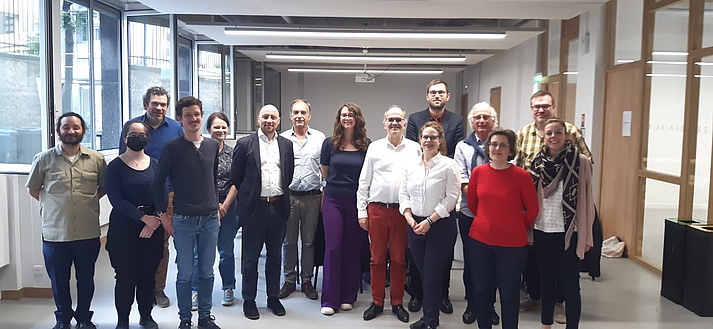
Am 15. Mai 2024 sprach Matteo Burioni bei einem Workshop der Ecole Nationale Superiore de Paris La Villette zu den Methoden und den Forschungsfragen von 3D-Rekonstruktion.
Hier finden Sie das Programm des Workshops.
Workshop im Centre Dominique-Vivant Denon des Musée du Louvre zur Restaurierung von Deckenmalerei 16.-20. Jahrhundert
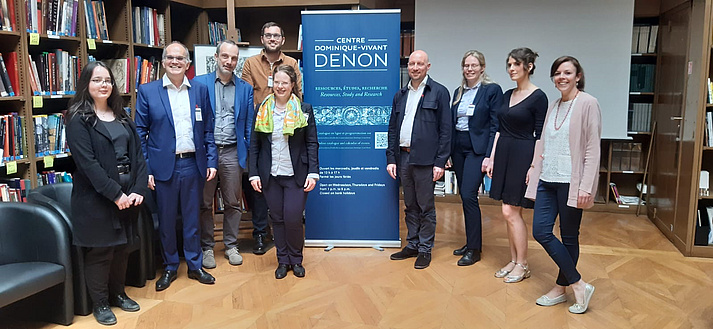
Am 13. Mai 2024 haben Olivier Bonfait (Université de Djion) und Matteo Burioni (Corpus der barocken Deckenmalerei, LMU München) einen Workshop im Centre Dominique-Vivant Denon des Musée du Louvre zur Restaurierung von Deckenmalerei 16.-20. Jahrhundert veranstaltet.
Hier finden Sie das Programm des Workshops.
Ankündigung der Tagung: "Herrschaft der Frauen – Herrschaft der Männer. Fürstabteien als weltliche Residenzen"
Der Rudolstädter Arbeitskreis zur Residenzkultur veranstaltet in Zusammenarbeit mit dem Kulturamt der Stadt Fulda vom 27. bis 29. September 2024 in Fulda die Tagung „Herrschaft der Frauen – Herrschaft der Männer. Fürstabteien als weltliche Residenzen“. Die Tagung richtet sich an alle Disziplinen, die mit Residenzkultur und Residenzforschung zu tun haben, so an die Geschichte, Kunstgeschichte und Museologie sowie alle Interessierten. Im Rahmen dieser Tagung werden werden auch Mitarbeiter des Corpus der barocken Deckenmalerei mit folgenden Beiträgen vertrteten sein:
Jasmin Kruse M.A: "Imperiales Fundament – der Kaisersaal des Fuldaer Residenzschlosses", Samstag, 28.09.24, 09:30 Uhr
Apl. Prof. Dr. Ulrike Seeger: "Die Fürstpropstei Ellwangen unter Franz Ludwig von Pfalz-Neuburg", Sonntag, 29.09.24, 09:30 Uhr
Dr. Heiko Laß: "Landesherrliche Selbstdarstellung in Residenz und Residenzlandschaft", Sonntag, 29.09.24, 10:30 Uhr
Die Veranstaltung findet in Präsenz statt. Der Veranstaltungsort ist das Stadtschloss Fulda (Schlossstraße 1, 36037 Fulda). Die Teilnahme ist kostenlos. Es wird um eine Anmeldung bis zum 01.09.2024 gebeten.
Hier geht es zum Programm.
Dienstag, 4.6.2024, 18.00 Uhr: Evening lecture by Prof. Dr. Stephan Hoppe „Ein virtuelles Museum der Malerei. Das Corpus der barocken Deckenmalerei in Deutschland geht an die Öffentlichkeit"
"Räume der Frauen: Deckenmalerei in barocken Residenzen": Vortrag von Dr. Heiko Laß

Im Rahmen der Vortragsreihe "Wir forschen. Für Sie." der Heidelberger Akademie der Wissenschaften und ihrer Schwesterakademien, wird Dr. Heiko Laß am 3. Juli 2024 einen Vortrag mit dem Thema "Räume der Frauen: Deckenmalerei in barocken Residenzen, die von oder für Frauen beauftragt wurde" halten. Die Veranstaltung findet im Vortragssaal der Heidelberger Akademie der Wissenschaften statt und beginnt um 18:15 Uhr. Der Eintritt ist frei und eine Anmeldung ist nicht erforderlich.
Hier finden Sie weitere Informationen zum Vortrag von Dr. Heiko Laß sowie das Programm der Vortragsreihe.
Tag der offenen Tür der BAdW, 04.Mai 2024
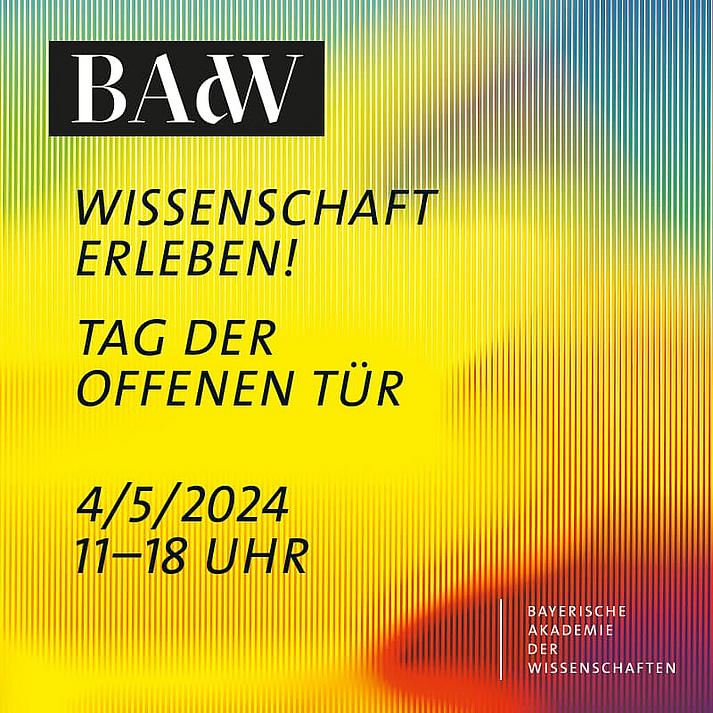
Das Corpus der barocken Deckenmalerei wird am Tag der offenen Tür der Bayerischen Akademie der Wissenschaften teilnehmen! Besuchen Sie uns am 04. Mai an unserem Stand, wenn die Akademie von 11 bis 18 Uhr ihre Türen für Sie geöffnet hat.
Das Projekt wird mit einem Stand vertreten sein, an dem Sie die Möglichkeit haben, eine VR-Brille auszuprobieren und die barocke Deckenmalerei verschiedener Bauwerke eingehend zu betrachten. Darüber hinaus wird Dr. Matteo Burioni einen Vortrag mit dem Titel: Warum zeigt barocke Deckenmalerei häufig Themen aus der Mythologie? halten.
Nutzen Sie die Gelegenheit, zahlreiche Forschungsbereiche kennenzulernen und an fesselnden Diskussionen und Experimenten teilzuhaben. Es erwartet Sie ein abwechslungsreiches Programm, das sowohl informative als auch interaktive Elemente bietet.
Wir freuen uns auf Ihren Besuch!
Hier finden Sie das Programm zur Veranstaltung.
Die Veranstaltung war ein voller Erfolg!!
Hier finden Sie ein Resümee und einige Eindrücke des Tages.
Nachruf auf Dr. Cordula Böhm, 03.02.1940–05.03.2024
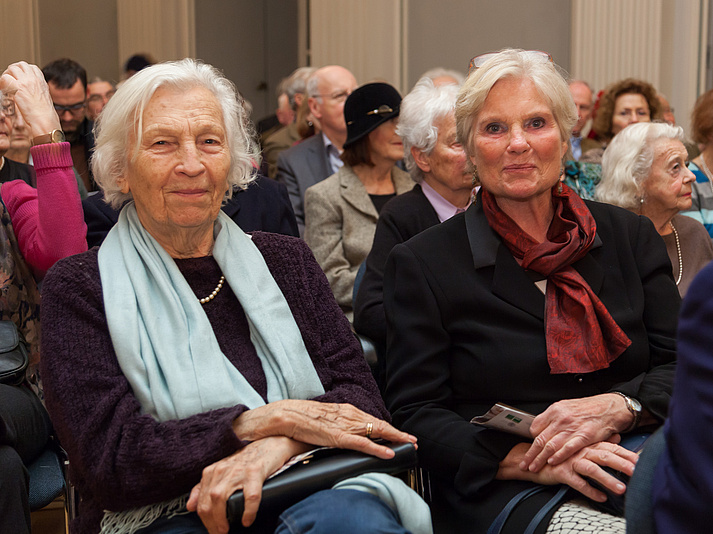
Dr. Cordula Böhm, geboren am 03. Februar 1940, verstarb am 5. März 2024 in München. Von 1969 bis 2014 war sie als wissenschaftliche Mitarbeiterin am Corpus der barocken Deckenmalerei in Deutschland tätig und verfasste zahlreiche Texte zu Kirchen, Klöster und Schlössern im Regierungsbezirk Oberbayern. Das Team des Corpus der barocken Deckenmalerei in Deutschland trauert um eine Wegbereiterin des heutigen Nachfolgeprojektes.
Hinter dieser kurzen, sachlichen Traueranzeige verbirgt sich ein nun endgültig abgeschlossenes Kapitel der Wissenschaftsgeschichte, ein Kapitel, das vor allem von den Hindernissen und Fallstricken, aber auch von den neuen Möglichkeiten der weiblichen Emanzipationsgeschichte im kunsthistorischen Mittelbau erzählt. Mit Cordula Böhm verstarb die letzte lebende Protagonistin des über Jahrzehnte am Vorgängerprojekt des heutigen CbDD tätigen Dreigespanns, bestehend aus Brigitte Sauerländer (26.05.1928 – 12.12.2014), Anna Elisabeth Bauer-Wild (4. Juli 1932 – 20. Juni 2018) und Cordula Böhm. Zahlreiche weitere, vor allem Mitarbeiterinnen wirkten in vielfältiger Weise am Entstehen der vierzehn zwischen 1976 bis 2014 entstandenen Bände mit, doch diese drei Kunsthistorikerinnen bildeten wohl über Jahrzehnte hinweg den Nukleus dieses von Prof. Dr. Hermann Bauer (12. Dezember 1929 – 22. Februar 2000) und Prof. Dr. Bernhard Rupprecht (10. März 1928 – 06. November 2017) gegründeten, später von Prof. Dr. Frank Büttner (26. Juli 1944 – 14. Mai 2016) fortgeführten Forschungsvorhabens.
Cordula Böhm begann ihre Tätigkeit am Corpus 1969 nach dem Abschluss ihrer Dissertation über Franz Georg Hermann (29. Dezember 1692 – 25. November 1768). Das Corpusprojekt selbst existierte, als ihr Doktorvater Prof. Bernhard Rupprecht das Angebot zur Mitarbeit unterbreitete, bereits seit drei Jahren. Sie solle nur rasch ihre Dissertation zu einem Abschluss bringen, so könne sie dann umgehend am Entstehen des ersten Bandes mitwirken. Cordula Böhm selbst war zu diesem Zeitpunkt bereits verheiratet und erwartete ihr zweites Kind.
Schon die Beschreibung ihres Einstieges in ihr wissenschaftliches Wirkungsfeld legt zahlreiche Schwierigkeiten offen, mit denen junge Kunsthistorikerinnen bei ihrem Berufsanfang vor einem halben Jahrhundert zu kämpfen hatten. Eine kleine Anekdote offenbart das tägliche Ringen um die notwendige Zeit, den eigenen Forschungen nachgehen zu können. So etablierten sich als beliebter Zeitpunkt für wissenschaftliche Nachfragen bei den Kolleginnen die frühen Morgenstunden ab 4.30 Uhr. Zu dieser Zeit seien die Kinder noch im Bett gewesen und so habe man sich ungestört über einen längeren Zeitraum telefonisch beispielsweise einer schwierigeren Ikonographie widmen können.
Wer nun aber allein an fehlende Kinderbetreuungsmöglichkeiten, zu dieser Zeit noch weit ausgeprägtere, geschlechterspezifische Stereotypen in der Ehe und ähnliches denkt, greift dennoch zu kurz: Aus der ganz persönlichen Sicht der Autorin dieses Nachrufes soll hier ein m.E. noch viel schwerwiegenderes Hindernis angesprochen werden. Diese Frauen, die über ein knappes Jahrhundert die wissenschaftlichen Ergebnisse der monumentalen Corpusbände erforschten, sahen zeitlebens keinen festen Arbeitsvertrag und ihr ,Gehalt‘ bestand allein aus einem im niederschwelligen Bereich angesiedelten, pekuniären Unkostenausgleich für ihre rastlose Tätigkeit. Eine Nennung der jeweiligen Autorin unter den jeweiligen Artikeln erfolgt übrigens erst ab dem 1989 erschienenen Band 3.1.
Ungeachtet der misslichen äußeren Umstände gelang es den MitarbeiterInnen die zu diesem Zeitpunkt reichlich unerschlossene Kulturlandschaft der zwischen dem Dreißigjährigen Krieg und dem Jahre 1800 entstandenen Deckenmalereien in Oberbayern zu sichten, zu erfassen und inhaltlich zu erforschen. Zu diesem frühen Zeitpunkt waren barocke Deckengemälde nur in den prominenteren Fällen bereits bekannt. Zumeist aber half nur die Fahrt in die jeweiligen Dörfer, Weiler und Städte, der Versuch, die örtliche Pfarrkirche in Augenschein nehmen zu dürfen und über geschickte Gesprächstaktik vor Ort an zusätzliche Informationen, beispielsweise über weitere Freskomalereien im örtlichen Pfarrhaus, zu gelangen. Eindrücklich ist die Geschichte der damals entwickelten, corpusspezifischen Messmethode: Um die Deckenhöhen exakt benennen zu können, nahm man immer einen heliumgefüllten Luftballon mit auf die Reise. Zeitweise chauffierte Dr. Alois Harbeck (10. August 1939– 30. März 2022) die ExpeditionistInnen mit seinem Cabriolet an die zuvor auf der Landkarte markierten Ortschaften. Das imaginierte Bild von Cordula Böhm als entschlossene Beifahrerin einer nach oben hin geöffneten Limousine, die sich mit einem roten Luftballon in der Hand an einem entlegenen Örtchen nach dem Kirchenschlüssel erkundigt, gehört zu meinen schönsten visuellen Vorstellungen.
Die Leistung dieser Ersterschließungen kann auch heute noch nicht hoch genug eingestuft werden. Cordula Böhms sich immer wieder in ihren so vielfältigen Objektbeschreibungen offenbarende, immense Kenntnis ikonographischer Zusammenhänge bleibt unerreicht. Ihr pragmatischer Blick auf wissenschaftliche Möglichkeiten, deren Grenzen und der innovativen Erweiterung dieser Grenzen setzt bis heute Maßstäbe. Doch jenseits aller dieser Verdienste steht etwas anderes: Die große Trauer um den Verlust dieser ebenso tiefgründigen wie praktisch veranlagten, lebensklugen, mitfühlenden und vor allem – nomen est omen –außerordentlich herzlichen Persönlichkeit.
München, den 10. März 2024,
Angelika Dreyer
Das Corpus der barocken Deckenmalerei auf dem XXXVII. Deutschen Kunsthistorikertag 2024 in Erlangen
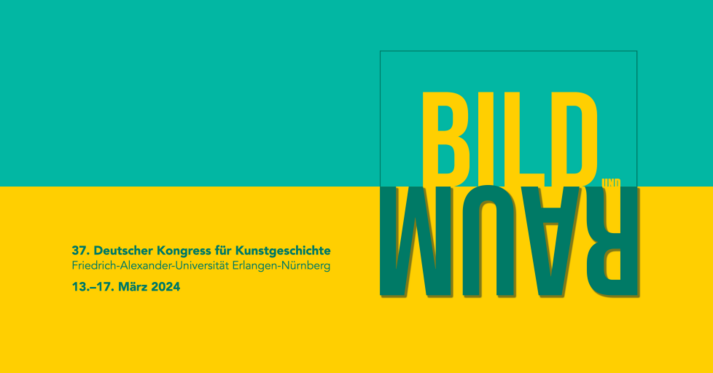
Das Corpus der barocken Deckenmalerei in Deutschland ist als Stand mit VR-Brille auf dem XXXVII. Deutschen Kunsthistorikertag 2024 in Erlangen vertreten.
Außerdem wird die Sektion des Gastlandes Tschechien: "Barocke Deckenmalereien als virtuelle Welt der frühen Neuzeit" von Ulrike Seeger mitgeleitet.
Hier geht's zum Programm.
Der Kongress war ein voller Erfolg! Zur Bildergalerie geht's hier.
"Decken- und Wandmalerei in Renaissance und Barock in Niedersachsen": Lecture by Dr. Heiko Laß
The lecture by Dr Heiko Laß took place on 05.02.2024 as part of the "Montagsvorträge" series of the Niedersächsischen Landesamts für Denkmalpflege at the Niedersächsischen Landesamts für Denkmalpflege.
In his lecture, Dr Heiko Laß presents the CbDD research project and also gives an overview of the objects in Lower Saxony researched as part of the project.
Link to the lecture here.
LEDs, Science and New Dimensions Open Lab Day at LRZ's V2C
The Corpus of Baroque Ceiling Painting in Germany appeared - with a contribution by PD Dr. Matteo Burioni - at "LEDs, Science and New Dimensions Open Lab Day at LRZ's V2C" at the Leibniz Supercomputing Centre of the Bavarian Academy of Sciences and Humanities (BAdW) on Thursday, October 19, 2023.

Historic Spaces and Multisensory Experience. A Digital Exploration of Light, Sound, and Movement
Workshop
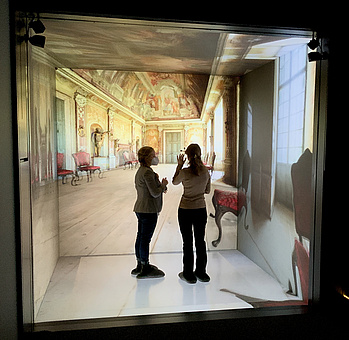
Date: October 11-13, 2023
Venue: Ludwig-Maximilians-Universität Munich, Main building, Lecture Hall E 216,
Geschwister-Scholl-Platz 1, 80539 Munich
Participation on-site or via Zoom.
Please register until October 06, 2023.: franziska.kaiser@kunstgeschichte.uni-muenchen.de
Zoom link: lmu-munich.zoom-x.de/j/68475497216
Meeting ID: 684 7549 7216
Identification code: 219238
The event will be recorded for scientific documentation.
Organization and Concept by Stephan Hoppe and Matteo Burioni
matteo.burioni@lrz.uni-muenchen.de
stephan.hoppe@kunstgeschichte.uni-muenchen.de
Baroque ceiling painting: weekly excursion tips with the 49-Euro-Ticket
Discover weekly excursion tips with the 49-Euro Ticket, recommended by the Corpus of Baroque Ceiling Painting. Follow the campaign on the BAdW Twitter Channel.
Explore all the Summer 2023 excursion tips from the Corpus of Baroque Ceiling Painting, gathered here.
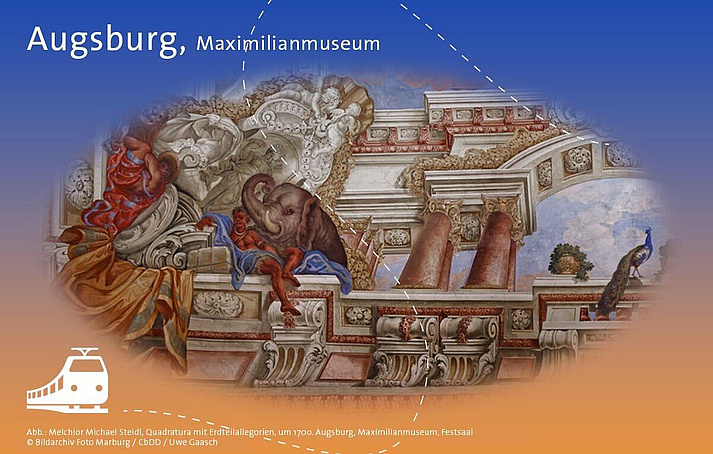
The Corpus of Baroque Ceiling Painting at the Kunstareal-Festival 2023

The Corpus of Baroque Ceiling Painting will be showcased at the Kunstareal Festival on July 16, 2023, and will be located in the foyer of the Museum Mineralogia.
If you want more information about the CbDD event at Kunstareal-Fest, you can click here.
No registration is necessary, and participation is completely free of charge.
The Corpus of Baroque Ceiling Painting at the Bavarian-Czech State Exhibition 2023 "Baroque! Bavaria and Bohemia"

The House of Bavarian History (HdBG) and the National Museum in Prague (NM) have joined forces to organize the Bavarian-Czech national exhibition titled "Baroque! Bavaria and Bohemia." The exhibition will be presented in two locations: from May 10 to October 3, 2023, it will be showcased in the special exhibition area (Donausaal) of the House of Bavarian History in Regensburg, and from December 8, 2023, to May 8, 2024, it will be displayed in the special exhibition area of the National Museum in Prague, located in the main building on Wenceslas Square.
The Corpus of Baroque Ceiling Painting is represented by two media stations.
Opening hours: Tuesday to Sunday from 9:00 AM to 6:00 PM.
Website: www.hdbg.de
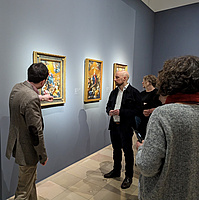
Exploring the exhibition "Guido Reni: The Divine"
Our Team was guided by Dr. Bastian Eclercy through the exhibition "Guido Reni. The Divine," which is on view at the Städel Museum in Frankfurt a. M. from November 23, 2022, to March 5, 2023.
Exploring Giovanni Battista Tiepolo's Ceiling Fresco: Insights into 17th and 18th Century European Decorative Art
PD Dr. Matteo Burioni will be delivering a guest lecture on January 10, 2023, at 4:15 p.m., as part of the VL "History of Architecture I" by Univ.-Prof.in Dr.in Anna Minta. The lecture will focus on his research on painted and sculpted ceiling decorations in 17th and 18th-century Europe, specifically using Giovanni Battista Tiepolo as an example.
The lecture titled "Image and Space: The Ceiling Fresco by Giovanni Battista Tiepolo in the Staircase of the Würzburg Residence" will provide a comprehensive overview of the art-historical and digital research possibilities in the study of ceiling painting, showcasing the influence of this courtly decorative art form across Europe during its peak around 1700.
Exploring the restored frescoes by Hans Georg Asam in Freising
Dr. Ulrike Götz accompanies the Corpus of Baroque Ceiling Painting on a visit to the Theater Hall in Freising (former Episcopal Lyceum) in honor of the ongoing restoration of the frescoes by Hans Georg Asam.
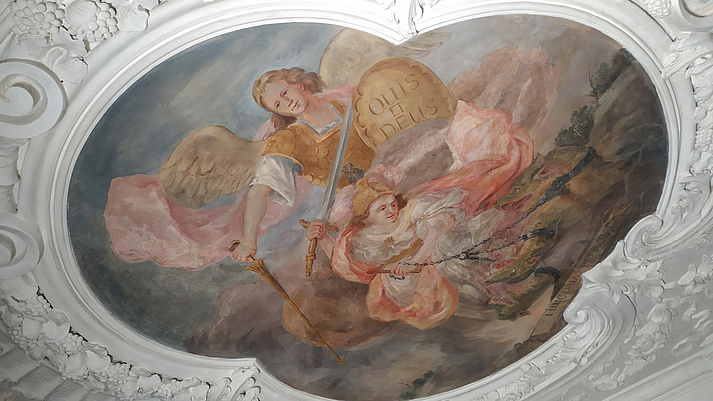
Baroque Ceiling Painting and the Accompanying Media of Representation - Perspectives of Production and Reception
International conference of the project "Corpus of Baroque Ceiling Painting in Germany" (CbDD),

Ceiling painting in the 17th century, in conjunction with architecture, becomes probably the most important medium of dynastic, princely, and ecclesiastical representation in the whole Central European area. Its main purpose and content is the visual demonstration of status, power, and prestige, but also of belonging, taste, and sophistication of its patrons. In the profane sphere, their place is the residence of a territorial lord: the prince's castle, the great hall, the representation or staterooms. In the sacred realm, the church room itself serves as the surface in the first place, which in turn is often finely subdivided.
The conference aims to explore the medial contexts of European ceiling painting between about 1550 and 1800 in the context of project conception, planning, and execution, as well as in post-project reception. Using case studies, it examines how Baroque ceiling painting is integrated into the accompanying and reproductive visual and textual media, and what role these play in its validity and mode of action.
The event is conceived and hosted by:
- Hubert Locher (Director DDK; Head of Arbeitsstelle Marburg)
- Stephan Hoppe (LMU, Institute for KG, overall project manager CbDD)
- Matteo Burioni (LMU; Institute for KG; Project Coordinator and Head of the Munich Office)
The International Conference will take place within the framework of the "Corpus of Baroque Ceiling Painting in Germany", a project within the Academies Program of the Union of German Academies of Sciences and Humanities, funded by the Federal Government and the States of Bavaria and Hesse, located at the Bavarian Academy of Sciences.
Registration (until September 30, 2022) and contact:
Jasmin Kruse (research associate and coordinator of the CbDD's Marburg office).
kruse@fotomarburg.de
Tel.: +49-6421-28-23325
Venue: Landgrafensaal, Hessian State Archives Marburg
Friedrichsplatz 15 | 35037 Marburg
Results of the Pax & Pecunia Project in the Corpus of Baroque Ceiling Painting

Under the title Pax & Pecunia, students at the University of Augsburg, under the project leadership of Prof. Dr. Andrea Gottdang and Dr. Angelika Dreyer, have been examining preserved and lost Baroque ceiling paintings in Augsburg townhouses since 2019. The starting point for this was around 30 gouaches made between 1936 and 1945 by Karl Nicolai (1883-1949), who copied the wall paintings, which were difficult to access at the time and are often lost today. In cooperation between the Chair of Art History at the University of Augsburg and the Augsburg Art Collections and Museums, an exhibition was created that will now be shown in Augsburg's Schaezlerpalais between May 19 and September 12, 2022. The diverse, often surprising results of the research project are presented in a catalog published by Imhof-Verlag. Thanks to the cooperation with the Corpus of Baroque Ceiling Painting in Germany, individual Augsburg objects can also be presented in more detail in its database: www.deckenmalerei.eu.
Link to the exhibition: https://kunstsammlungen-museen.augsburg.de/pax-und-pecunia.
LRZ Celebrates 60 Years: Congratulations from the Corpus of Baroque Ceiling Painting in Germany
At the ceremony "60 years LRZ" on July 14, 2022, PD Dr. Matteo Burioni paid tribute to the successful collaboration of the LRZ with the Corpus of Baroque Ceiling Painting in Germany.
Article "Under French-German Skies. Digital Exploration of Ceiling Painting on Both Sides of the Rhine"
In the article "Under German-French Skies. Digital Research of Ceiling Painting on Both Sides of the Rhine" by PD Dr. Matteo Burioni in Akademie Aktuell 76/2022 discusses the digital research of ceiling painting on the German and French sides of the Rhine. The article offers insights into the latest developments and approaches to researching and documenting this important form of artistic expression.
Presentation of the CbDD at the kickoff workshop of the Herrenhaus Center by PD Dr. Matteo Burioni
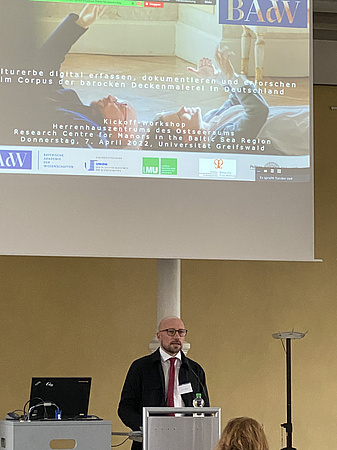
The Manor House Center, a newly established institution, focuses on studying post-medieval manor houses from 1500 onwards. These architectural treasures remain integral to the distinctive cultural landscape of the Baltic Sea region.
With an estimated count of 12,000 to 15,000 estates, these properties span across ten countries: Germany, Poland, Russia (Kaliningrad, Ingermanland, and Karelia*), Lithuania, Latvia, Estonia, Finland, Sweden, Denmark, and Norway. The project receives equal funding from the Ministry of Science, Culture, Federal and European Affairs of Mecklenburg-Vorpommern and the Federal Government Commissioner for Culture and the Media.
The Corpus of Baroque Ceiling Painting at the XXXVI. German Art Historians' Conference 2022
Baroque Splendor: The Restorative Journey of Discovery to Carlo Carloni's Frescoes in Ansbach
The Corpus of Baroque Ceiling Painting is conducting a laser scanning and photogrammetry campaign with the team of Prof. Dr. Mona Hess (University of Bamberg) and in cooperation with the Bavarian Palace Department on the occasion of the restoration of Carlo Carlone's frescoes in Ansbach.
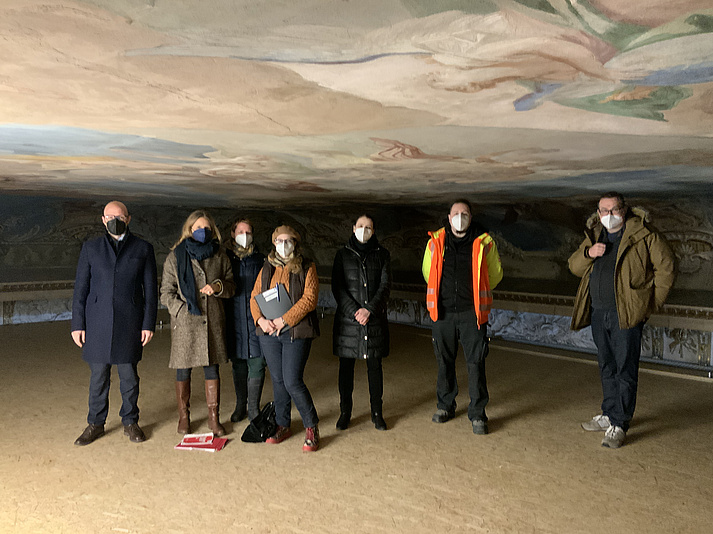
International Conference on Baroque Ceiling Paintings in Europe
The Corpus of Baroque Ceiling Painting in Germany and the German Forum for Art History, as well as the Université de Bourgogne, are organizing the international conference "Plafonds peints en Europe XIVe -XXIe siècles: formes, fonctions, fictions" in Paris on December 2 and 3, 2021. The conference is generously supported by special funds from the Bavarian Academy of Sciences and Humanities.
Three lectures of the Corpus of Baroque Ceiling Painting at the conference "301 Years of the Mannheim Residence"
At the conference "301 Years of the Mannheim Residence: From the Laying of the Foundation Stone to Digital Reconstruction", the Corpus of Baroque Ceiling Painting will be represented with three exciting lectures.
The CbDD at the Great Garden in Dresden
Pablo Gumiel Campos, a member of the European doctoral network Palamusto ETN (Research and Training for the Palace Museum of Tomorrow), shares insights from the photogrammetry and laser scanning campaign conducted for the Corpus of Baroque Ceiling Paintings in Germany. The campaign took place at the Great Garden n in Dresden and was carried out in collaboration with Schlösserland Sachsen GmbH and Staatsbetriebe Bau- und Immobilienmanagement Sachsen.
The CbDD at the 53rd German Historians' Conference
The "Corpus of Baroque Ceiling Painting in Germany" of the Bavarian Academy of Sciences and Humanities invites you to virtual tours of magnificent Baroque buildings on October 5 and 6 at 1 pm. The tours will take place in the Mozilla Hub and last about 30 minutes.
Interested parties can register to participate by emailing pressestelle(at)badw-muenchen.de.
Further information on the 53rd German Historians' Day with the theme "Interpretation Battles" is available on the homepage of the Bavarian Academy of Sciences and Humanities as well as the homepage of the Historians' Day.
The Corpus of Baroque Ceiling Painting at the Kunstareal-Fest 2021

The Kunstareal-Fest is an event organized by the Free State of Bavaria, the City of Munich, and the Förderkreis Kunstareal München.
Together with Munich's large and small art and cultural institutions, the Kunstareal-Fest is taking place for the fifth time and, under this year's title "Blickpunkte" (Viewpoints), invites visitors to an "inspiring journey of exploration through 5,000 years of cultural history - on-site and digitally".
This year, the Corpus of Baroque Ceiling Painting is also represented with an online guided tour through the virtual reconstructions of the Bamberg Imperial Hall and the lost Lusthaus of the Munich Residence.
Dates of the online guided tour
15. 07. / 18:00 to 18:30
15. 07. / 19:00 to 19:30
15. 07. / 20:00 to 20:30
16. 07. / 16:30 to 17:00
19. 07. / 16:30 to 17:00
20. 07. / 16:30 to 17:00
21. 07. / 16:30 to 17:00
For more information on the CbDD event at the Kunstareal Festival, click here.
Register to participate by emailing e.radmacher(at)kunstgeschichte.uni-muenchen.de.
Participation is free of charge.
The virtual reconstructions were created in cooperation with Elisabeth Mayer / Leibniz-Rechenzentrum (LRZ).
Art Enjoyment in Pandemic Times
We are delighted to present the article "Art Enjoyment in Pandemic Times" written by Dr. Matteo Burioni, featured in Akademie Aktuell on June 15, 2021. Discover how art has become a source of enjoyment and inspiration, even amidst challenging circumstances. Join us in exploring the uplifting power of art during the pandemic.
Read the full article here!
Article about Sebastiano Ricci's ceiling painting in Schönbrunn
An article about Sebastiano Ricci's ceiling painting in the Schönbrunn Palace was published in the newspaper 'Die Presse' on April 17, 2021. Read the exclusive interview with Herbert Karner from the Austrian Academy of Sciences, who gives exciting insights into the artist's work.
Call for Papers: Painted Ceilings in Europe (XIV- XXI Century)
Organized by the German Forum for Art History-DFK (Paris), the Ludwig-Maximilians-University (Munich) and the Université de Bourgogne (LIR3S, CNRS, UMR 7366).
International Conference, Paris, DFK, 2-3 December 2021.
The legacy of baroque ceilings: a look at Germany's magnificent art history
Published in the Donaukurier of the Passauer Neue Presse on February 23, 2021, the article is dedicated to the fascinating "Corpus of Baroque Ceiling Painting in Germany." Immerse yourself in the rich art history of the Baroque period and discover the impressive diversity of ceiling painting that shapes our cultural heritage. Learn more about the significant works that enrich this special era of art throughout the country.
Panel: The Munich Residence during the Renaissance
Join us for a panel about the Munich Residence," organized in collaboration with the Corpus of Baroque Ceiling Painting in Germany, which is part of the Bavarian Academy of Sciences (BAdW). Esteemed scholars Prof. Dr. Stephan Hoppe and PD Dr. Matteo Burioni will be leading the discussions.
- Date: Thursday, February 18, 2021
- Time: 9:00 a.m. - 4:00 p.m.
Articel SZ
The January 28, 2021 issue of SZ EXTRA Culture and Pastimes features an exciting article about the fascinating publication database of the "Corpus of Baroque Ceiling Paintings in Germany". Dive into a world full of artistic masterpieces and discover valuable information about Baroque ceiling paintings in Germany.
Read the Article now.
Project of the month
In January 2021, the Corpus of Baroque Ceiling Painting in Germany is Project of the Month in a presentation of the Academies Program of the Union of the German Academies of Sciences and Humanities on the homepage of the Federal Ministry of Education and Research (BMBF).
New project movie of the CbDD
Discover a captivating new project film that takes you on a virtual journey to the magnificent residences in Würzburg and Ellingen, showcasing the remarkable work of the Corpus of Baroque Ceiling Painting in Germany (CbDD) across the Federal Republic.
Witness the seamless collaboration between the project's two essential units: the Munich-based art historians utilizing high-resolution photographs from Marburg to collect, document, and research the stunning baroque interiors. The publication database opens up these treasures to researchers worldwide, offering unparalleled access to this exceptional art.
Concept, Camera, and Editing by Dr. Laura Räuber, © Bayerische Akademie der Wissenschaften 2020.
For more information, read the press release "From the Residence to the Screen: New Project Film on Baroque Ceiling Painting in the BAdW Media Library Online" by the Bavarian Academy of Sciences and Humanities.
Vortragsreihe: 300 Jahre Asamfresken in der Basilika Weingarten
Vor dem Hintergrund des 300-jährigen Jubiläums der Fresken von Cosmas Damian Asam in der Basilika Weingarten, die vor einer langen Phase der Restaurierung stehen, hält Ulrike Seeger am Donnerstag, den 15. Oktober 2020, einen Vortrag mit dem Titel
„Der Künstler Cosmas Damian Asam. Werk und Bedeutung für die süddeutsche Freskomalerei“.
Die Veranstaltung ist Teil einer Vortragsreihe zur Erschließung des Kunstwerks und findet im Rahmen der Zusammenarbeit der katholischen Kirchengemeinde St. Martin in Weingarten mit Vermögen und Bau Baden-Württemberg, Amt Ravensburg, der Stadt Weingarten und der Katholischen Erwachsenenbildung statt.
Der Vortrag findet um 19 Uhr in der Basilika statt. Der Eintritt ist frei.
Weitere Informationen finden Sie hier.
Dr. Matteo Burioni in an interview with "Akademie Aktuell
New publication at Hirmer and beta version of the publication platform online
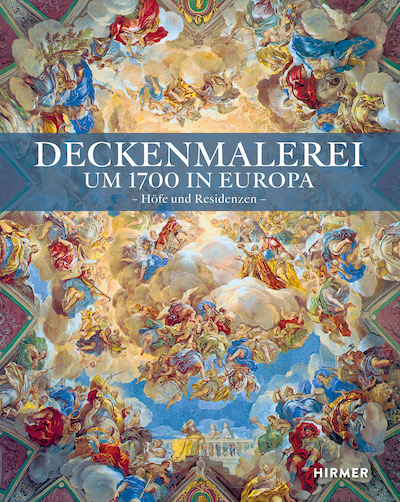
Baroque ceiling painting for browsing and surfing
Discover and marvel at ceiling paintings in churches and monasteries, castles and banquet halls without stiff neck and without having to leave your own living room: This is made possible by the new volume of the BAdW project "Corpus of Baroque Ceiling Painting in Germany".
Ceiling Painting around 1700 in Europe - Courts and Residences
Edited by: Stephan Hoppe, Heiko Laß and Herbert Karner
At the same time, the beta version of the publication platform www.deckenmalerei.eu goes online, which covers the ceiling painting from 1550 to 1800 in the area of today's Federal Republic of Germany is recorded, documented, and researched.
- To the press release.
- To the publication platform www.deckenmalerei.eu.
NFDI4Culture: Projektvorstellung in Mainz

Auf seiner Sommerreise besuchte der Staatsminister Konrad Wolf die Akademie der Wissenschaften und der Literatur Mainz und informierte sich über das Konsortium NFDI4Culture (Nationale Forschungsdateninfrastruktur for Culture), das Ende Juni 2020 bewilligt wurde und dessen Träger die Akademie ist.
Als Teil des Konsortiums wurde der "Corpus der barocken Deckenmalerei in Deutschland" neben dem Projekt "Motion Bank" ausgewählt, sich und ihr Forschungsvorhaben in Mainz vorzustellen. Präsentiert wurde der Bamberger Kaisersaal, der mithilfe von Virtual Reality erfahrbar und begehbar gemacht werden konnte.
Hier finden Sie den Bericht zum Besuch des Ministers auf der Website der Akademie der Wissenschaften und der Literatur Mainz und die Pressemitteilung.
Article in the Augsburger Allgemeine
In the article "Baroque Gems in Augsburg", the Augsburger Allgemeine reports on the cooperation of the Corpus of Baroque Ceiling Painting in Germany with the project "Pax et Pecunia. Baroque ceiling painting in Augsburg townhouses". Website-Link
Augsburger Allgemeine, July 16, 2020
Photo campaign in the staircase of the Würzburg Residence
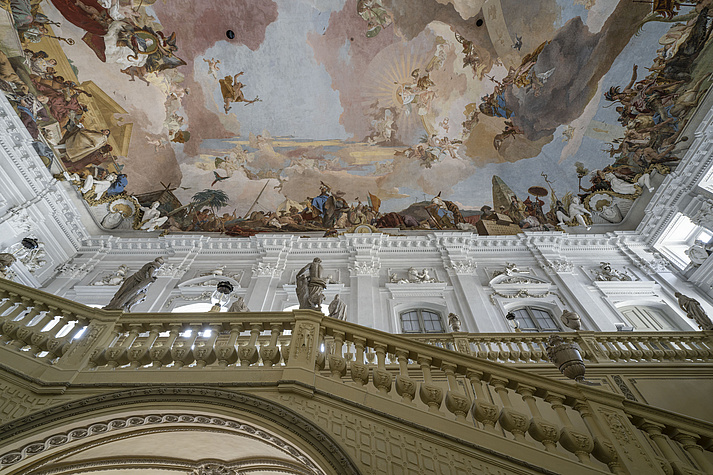
The Corpus of Baroque Ceiling Painting in Germany of the Bavarian Academy of Sciences and Humanities was able to photograph Tiepolo's frescoes in the stairwell of the Würzburg Residenz during the Corona-related Lockdown.
Special thanks go to the Bavarian Palace Department, which made this photo campaign possible and offered us the unique opportunity to photograph the deserted staircase of the Würzburg Residenz.
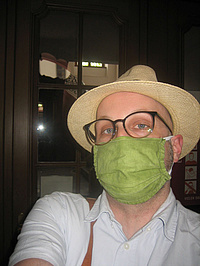
Business trip with Mask
Jens Fachbach travels to Mainz, in order to visit the Landesdenkmalamt for his research. The headquarters of the Landesdenkmalpflege department is located in the Erthaler Hof, where this selfie was taken.
Photo Campaign in Saxony: Behind the scenes
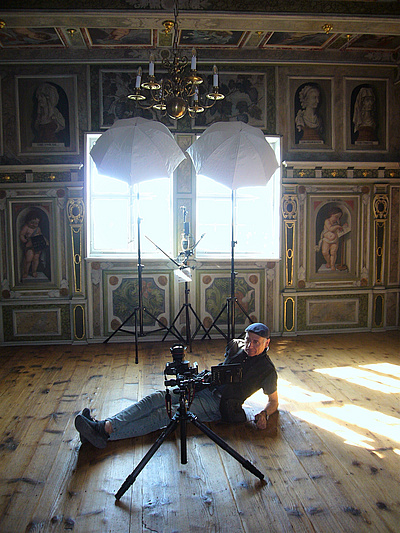
Uwe Gaasch takes photographs for the corpus of baroque ceiling paintings in Germany in the Hoflössnitz in Radebeul. The wall and ceiling painting of the Lusthaus of the Saxon Electors was made by Albert Eckhout and Centurio Weibel and dates from 1650 to 1656.
Start of NFDI4Culture
The Bavarian Academy of Sciences is represented with two research projects in the new consortium NFDI4Culture: The Corpus of Baroque ceiling paintings in Germany and the Critical Edition of the Works of Richard Strauss.
The consortium is led by the Academy of Sciences and Literature Mainz (ADW Mainz). On 26 June, the Joint Science Conference (GWK) approved the application submitted by an association of various academies, universities and cultural heritage institutions. With NFDI4culture, the cooperation between the academies will be strengthened sustainably at the operational level.
"The national strategy for research data infrastructure and especially the NFDI4culture offer great opportunities for the corpus of baroque ceiling painting in Germany in terms of research data re-use, data analysis and the provision of 3D data. This will bring considerable simplifications and improvements, especially for the digitally launched academy projects such as the Corpus".
(Matteo Burioni, Project Coordinator CbDD)
See the Press release "NFDI4Culture" of the Bavarian Academy of Sciences
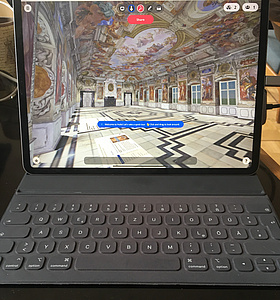
Testing Mozilla Hubs
In cooperation with the Leibniz Computing Centre of the Bavarian Academy of Sciences (LRZ), the corpus of baroque ceiling paintings in Germany is testing Mozilla Hubs for the virtual visit of our 3D reconstruction of the Bamberg Kaisersaal.

First Selfie by Prof. Dr. Ute Verstegen (FAU Erlangen) and Dr. Georg Hohmann (Deutsches Museum) in the 3D reconstruction of the Bamberg Kaisersaal in Mozilla Hubs.
Book Announcement
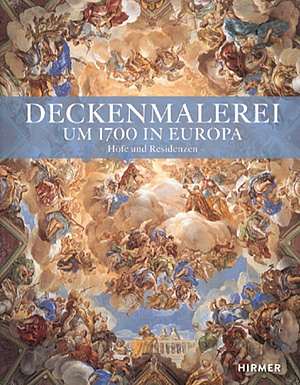
Deckenmalerei um 1700 in Europa - Höfe und Residenzen
published by:
- Stephan Hoppe
- Heiko Laß
- Herbert Karner
Across both Northern and Southern Europe, a multitude of baroque residences mesmerize visitors with their grandeur, adorning ceilings and walls with magnificent paintings depicting the realms of princely governance and the allure of an idealized reality. This volume delves into the significant role these artworks played as a vital instrument of self-representation for nearly all of Europe's prominent dynasties. With profound insights, the book reveals how these striking visual narratives were strategically employed to showcase the power and prestige of these noble families throughout history.
Click here for more information.
New Release
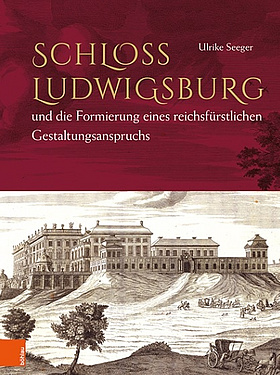
Ulrike Seeger:
"Schloss Ludwigsburg und die Formierung eines reichsfürstlichen Gestaltungsanspruchs"
This book delves into the captivating story of Ludwigsburg Palace, one of Europe's most splendidly adorned baroque palaces. Built by Duke Eberhard Ludwig von Württemberg in 1704, the work examines how the palace achieved its astonishingly high artistic and conceptual standards, despite facing challenging circumstances.
Delving into historical records and sources, the book uncovers the secrets of how Ludwigsburg Palace was designed to match the grandeur of other imperial courts. Artists' networks, courtly prints, and the influence of higher-ranking courts within and beyond the imperial association all played crucial roles in shaping the palace's opulent features.
The book not only highlights the meticulously hierarchical layout of the palace and garden, masterfully crafted by Johann Friedrich Nette but also unveils the imperial princely design of the interior. With detailed reconstructions up to the year 1716, this publication provides a comprehensive insight into the grandeur and magnificence of Ludwigsburg Palace.
Click here for more information
Pax et Pecunia – Baroque ceiling painting in Augsburg townhouses
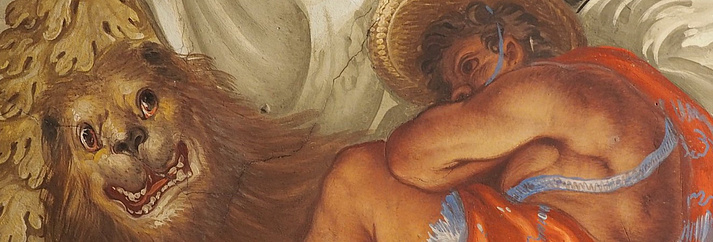
The Corpus has started a cooperation with the research and exhibition project "Pax et Pecunia - Barocke Deckenmalerei in Augsburger Bürgerhäusern" led by Prof. Dr. Andrea Gottdang (University of Augsburg) and Dr. Angelika Dreyer (CbDD). The results of the Augsburg project will be published on the publication database of the Corpus.
Click here for more information.
Continuity of research
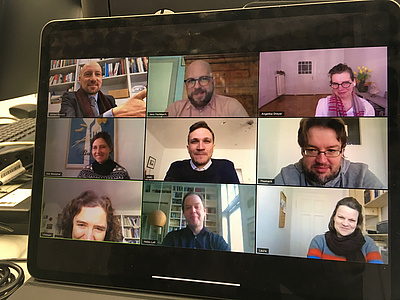
Amidst the Corona crisis, the Corpus of Baroque Ceiling Painting in Germany persists in its endeavors as a distributed digital project. The team employs video conferences, digital messengers, and efficient project management to communicate and coordinate their collaboration. Our primary objective is to expedite the launch of our new publication platform, providing seamless digital access to Germany's rich cultural heritage.
Thank you Cambridge!
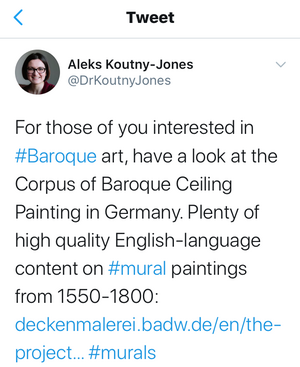
Dr. Aleksandra Koutny-Jones from the Institute of Continuing Education (ICE) at the University of Cambridge compliments the English version of our homepage on Twitter during the corona crisis.
"In die Freiheit entlassen. Tiepolo und die Deckenmalerei"
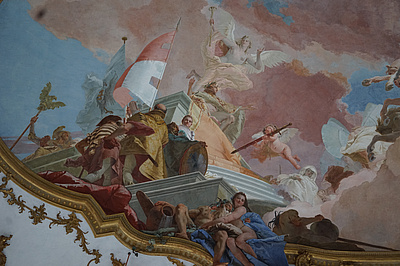
The lecture by PD Dr. Matteo Burioni took place on the 27th of February in the Hamburger Kunsthalle as a special event for the exhibition Goya, Fragonard, Tiepolo - Die Freiheit der Malerei.
Link to the event here.
Tiepolo und die Deckenmalerei: Lecture by Prof. Dr Stephan Hoppe and PD Dr Matteo Burioni
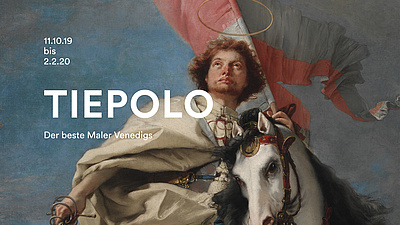
As part of the current Tiepolo exhibition in the Staatsgalerie Stuttgart, the study day on Saturday will also be devoted entirely to the artist:
"Tiepolo und seine Welt: Studientag und Podiumsgespräch"
Tiepolo's painting opens up pictorial spaces full of light and colour. But in which worlds did the artist operate? Well-known researchers from the history of art and music open up new perspectives on Tiepolo's life and work. The artist's fantastic pictorial inventions are illuminated, as is the music that accompanied him in Venice and Würzburg. A further contribution uncovers Tiepolo's traces in Germany, which extend as far as Ludwigsburg Palace. The concluding discussion of the artist will focus on the question of Tiepolo's modernity: what can his paintings still tell us today?
Saturday, January 25, 2020, 1 to 5 pm
Invitation to the Salon Sophie Charlotte in Berlin

Weltbilder: This is the theme of this year's Salon Sophie Charlotte in Berlin, organized by the Berlin-Brandenburg Academy of Sciences and Humanities, and the corpus of Baroque ceiling painting is also represented. For more information see https://salon.bbaw.de/home/
Saturday, January 18, 2020, 6 to 12 pm
Appearance of the CbDD on ARD
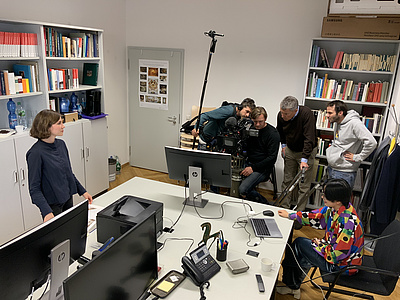
The documentary film by Bayerischer Rundfunk showcasing long-term research will air on ARD alpha at 8:15 pm on Monday, December 2. The Corpus of Baroque Ceiling Paintings in Germany has been featured in this film, offering fascinating insights into the daily operations of an art historical research project in the digital age.
Now available in the BR media library: Wissenschaft mit langem Atem - Was bringt Langzeitforschung? (Long-Term Research: The Impact of Endurance in Science).
Lecture: Dr. Heiko Laß: „Ehre sei Gott in der Höhe“ – Die Weihnachtsgeschichte in der barocken Deckenmalerei in Deutschland
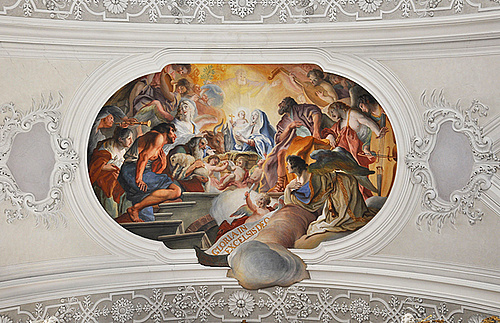
On the ceilings of numerous churches and monasteries there are various scenes and representations of the Christmas story. Especially the adoration of the shepherds and the Three Kings were popular motifs in early modern times. Sometimes it is late at night and only a few people can be seen, but sometimes it is as bright as day or there are crowds of angels in the sky and crowds of people on earth. But also the annunciation or the offering in the temple have been painted by the artists again and again on walls and ceilings. Depending on the season, Dr. Heiko Laß, research assistant in the project Corpus of Baroque ceiling painting, guides us through the Christmas story with the help of various examples.
Monday, December 2nd, 2019, 7:30 pm
Rittersaal auf der Wasserburg
FAZ interviews Laura Albers
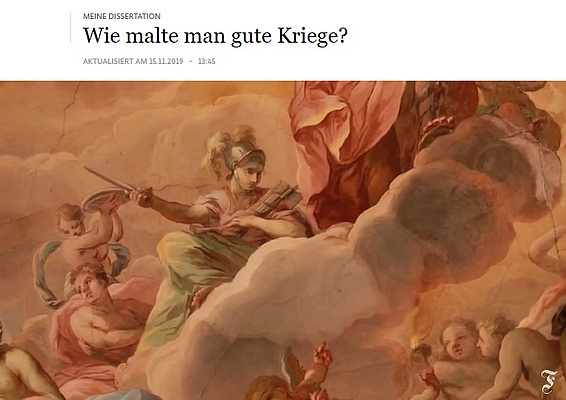
Our research assistant Laura Albers visits the Residence of Ellingen in Franconia and presents her dissertation project, which is part of the research project "Corpus of Baroque ceiling painting in Germany" at the LMU Munich under the supervision of Prof. Dr. Stephan Hoppe. The FAZ accompanied her on the tour.
You will find the whole interview "Wie malte man gute Kriege?" here.
Budapest and Warschau – Lectures by Dr. Angelika Dreyer
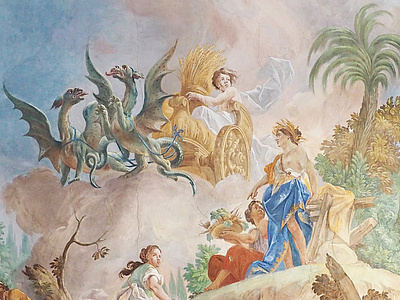
Dr. Angelika Dreyer will give a lecture on "Akademischen Reformen und barocker Freskomalerei" at the international workshop "Neue Forschungen zur barocken Deckenmalerei" and the annual meeting of the Baroque ceiling painting group of central Europe (BCPCE) in Budapest from 31 May to 2 June. You can find more information here.
On June 5th the lecture on "Katholischen Aufklärung und ihre Reflexion in der visuellen Kultur der barocken Deckenmalerei in Süddeutschland" will follow. Dr. Angelika Dreyer will speak here in the course of the "Internationalen Methodenkonferenz" at the University of Warsaw.
You can find more information here.
„Der Stil muss deutlich, einfach und verständlich sein!“ – Lecture at the Collegium historiae artium
Dr. Angelika Dreyer speaks on April 24, 2019 in Prague, at the Collegium historiae artium, about the frescoes of Joseph Mages (1728 - 1769) and the Catholic Enlightenment in the Diocese of Augsburg.
The pictorial implementation of the iconography of the cross passed through an interesting development in South German ceiling painting. About the middle of the 18th century a change can be observed here: It leads away from the narrative depictions of the themes of the Finding of the Cross and the Exaltation of the Cross, which are decisive in the fraternal festival calendar, or the eventful depiction of the Battle of the Milvian Bridge. Instead, a turn towards the painterly implementation of Christ's crucifixion is now evident, in which the piety of Christ and the implementation of devotional themes play a decisive role.
The fresco by Joseph Mages in the parish church of Dillishausen shows in an exemplary way how the enlightened renewal movement towards post-Tridentine piety practice found its way into the content and formal design. All in all, the diocese of Augsburg proved to be an essential centre for the artistically relevant implementation of the reform efforts of the Catholic Enlightenment, which were initiated to a large extent by Lodovio Antonio Muratori (1672-1750).
More information here
Baroque architecture in 3D
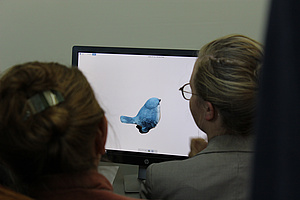
Teaching staff face up to digital teaching methods in the arts
On November 17, 2018, doko18 in Munich offered the lecture and workshop "KLÄREN – Digitale Medien nutzen – 3D-Modellierung des Klärens und (Nach-)Gestaltens barocker Architektur" in the context of the section "III: Rezeptionsangebote" moderated by Dr. Barbara Lutz-Sterzenbach and Prof. Dr. Frank Schulz. The speakers PD Dr. Ute Engel (LMU, Institute for Art History) and Dr. Karin Guminski (LMU, Institute for Art Education, Art and Multimedia) began by reporting on their joint seminar, in which they and students* of art history and art and multimedia virtually recreated the chamber orchestra of the Electress in Schleißheim Palace in 3D. For this purpose, the students photographed the room on site and later reconstructed it on the computer using various software. The result was presented at the LRZ in the CAVE, a room with 5-sided projections, which presented the chapel in three dimensions for viewers with the help of special glasses.
After the report, many interested questions about the applicability of 3D model technology were asked in an open discussion round. Which are the new insights for the art history resulting from this possibility? What perspective differences arise in a virtual view as opposed to an analogue view? How can it really offer students easier access to old buildings and works of art? And how can students create a 3D image themselves?
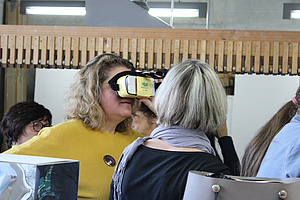
The last of these questions was finally answered during the workshop. The former art and multimedia students Elisabeth Mayer and Kristian Weinand explained to the teachers how to build a convincingly detailed 3D-model of a real object with a mobile phone camera and the program "Autodesk Recap Photo", which is free of charge for teaching institutions. The teachers were able to see this object three-dimensionally with a cardboard and their mobile phone and could take a manual home with them to try it out for themselves, or rather, to take it to school. A greater digitalisation of school lessons seems to be inevitable in the future. However, the fact that the technology for this is already available on smart phones for almost all pupils today must first be made clear to the teaching generation in order to be able to benefit from it. And even if some of the participants were still sceptical about the topic, the large attendance and the never-ending discussion showed the great interest of the teachers in the interface between art, technology and pedagogy.
text: Melissa Dietzel (student, study course art and multimedia, LMU Munich)
The 3D-model of the Bamberger Kaisersaal presented again
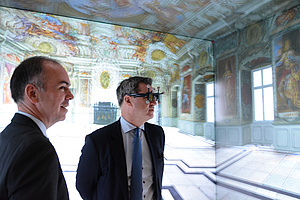
On September 24, 2018, the new SuperMUC-NG was ceremonially commissioned at the Leibniz-Rechenzentrum (LRZ) of the Bayerische Akademie der Wissenschaften by Bavarian Prime Minister Dr. Markus Söder, Science Minister Prof. Dr. Marion Kiechle and Academy President Prof. Dr. Thomas Höllmann. The 3D-model of the Bamberger Kaisersaal, which was developed by the Corpus der barocken Deckenmalerei (CbDD) together with Bernhard Strackenbrock from the company "illustrated architecture" and the LRZ, was also presented in the CAVE.
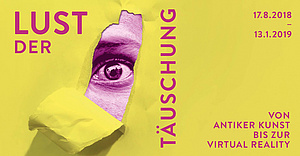
The 3D model of the Bamberger Kaisersaal was also on display in the exhibition "Lust der Täuschung" at the Kunsthalle Munich, which was shown from 17 August 2018 to 13 January 2019. The exhibition dealt with optical illusions and visual subtleties within the performing arts. A multitude of exhibits from different areas, such as sculpture, architecture, design, fashion and even spatially experienceable virtual reality art, offered the viewer penetrating insights into the "(art)-history of illusion and appearance". The illusionistic means of deceiving the eye in baroque ceiling painting are explained in an essay by project coordinator PD Dr. Ute Engel in the exhibition catalogue.
Akademie Aktuell Nr. 64/2018

A further issue of the publication magazine "Akademie Aktuell" informs about new, current topics in science. In the newly published issue the topic of virtual reality and visualization is addressed. The science project "Corpus of baroque ceiling painting in Germany" also deals with this topic. Thus, the wall and ceiling paintings are not only documented photographically, but also published digitally. The different recording techniques and image processing, as well as the two-dimensional form of presentation are important for the presentation of the image material. Download
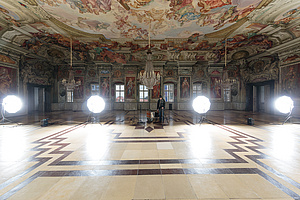
Photo Campaigns
Making of: The new photo campaigns for the Corpus of Baroque Ceiling Painting in Germany (CbDD) are organized by the research team at Bildarchiv Foto Marburg - DDK on site and in close collaboration with the team of photographers: Preparations for the ideal lighting of the Kaisersaal in the residential palace of Bamberg (November 2015). Read more

